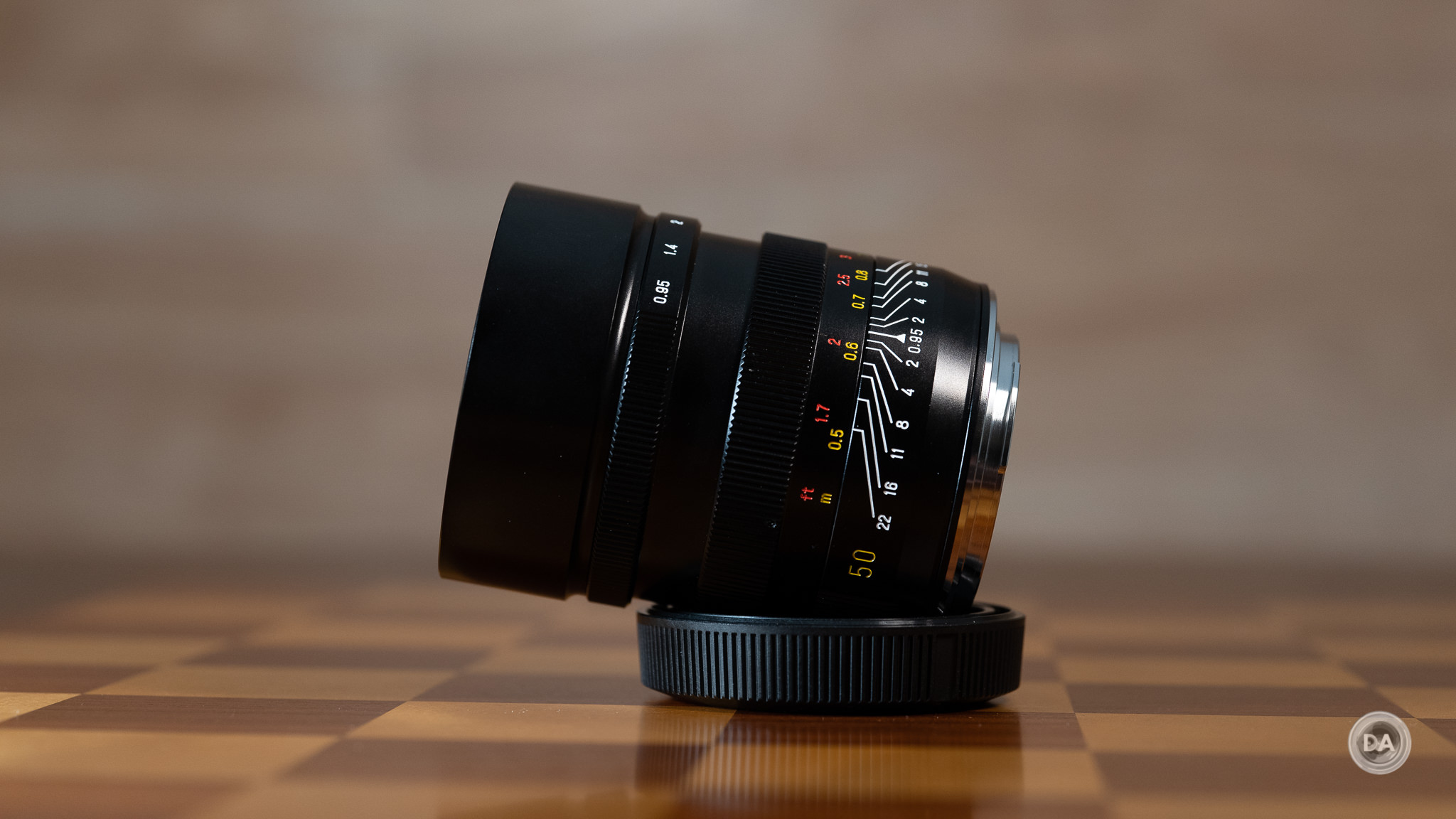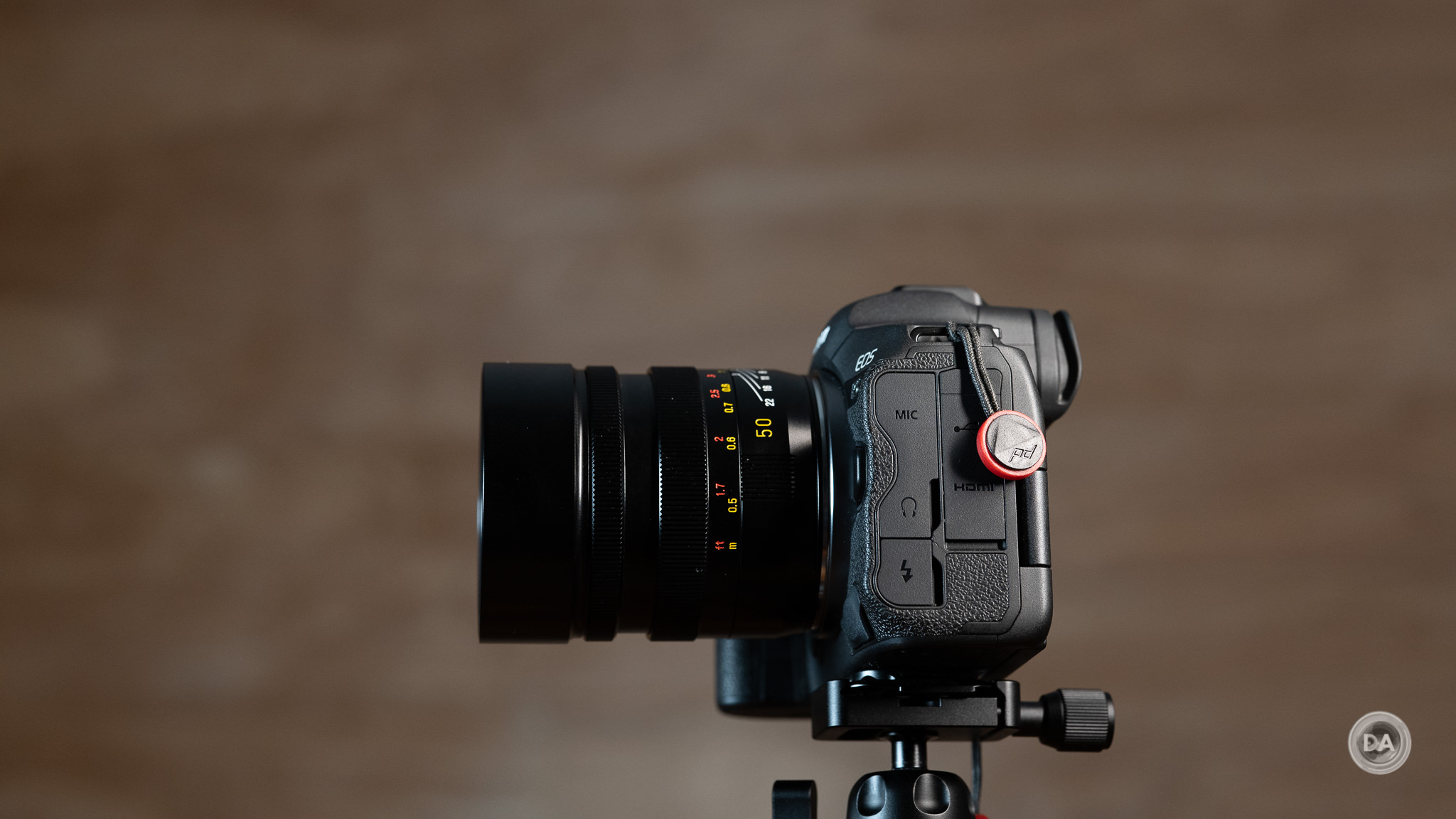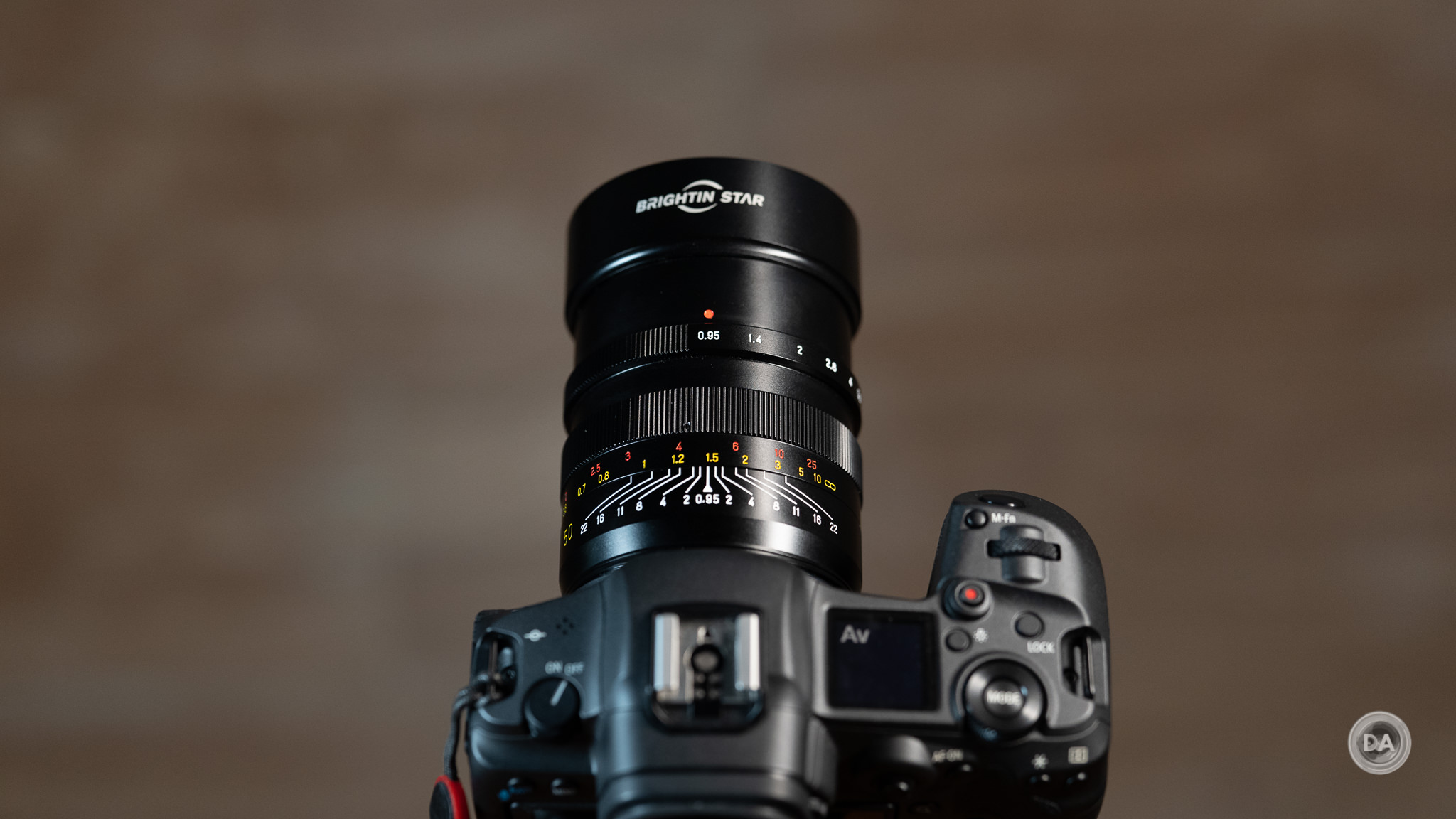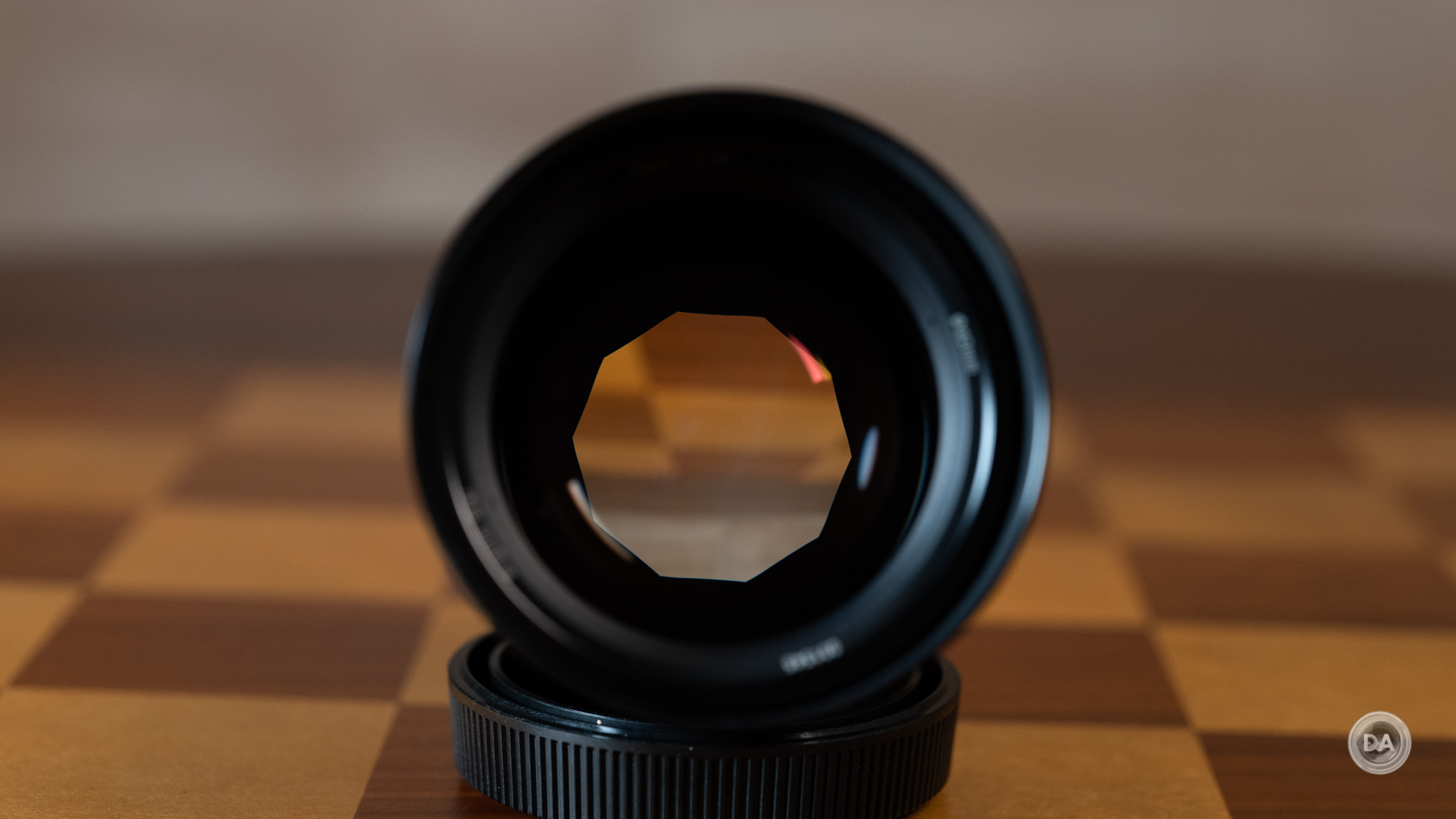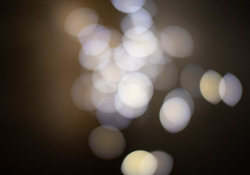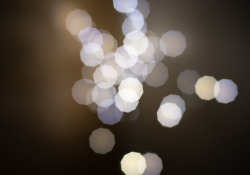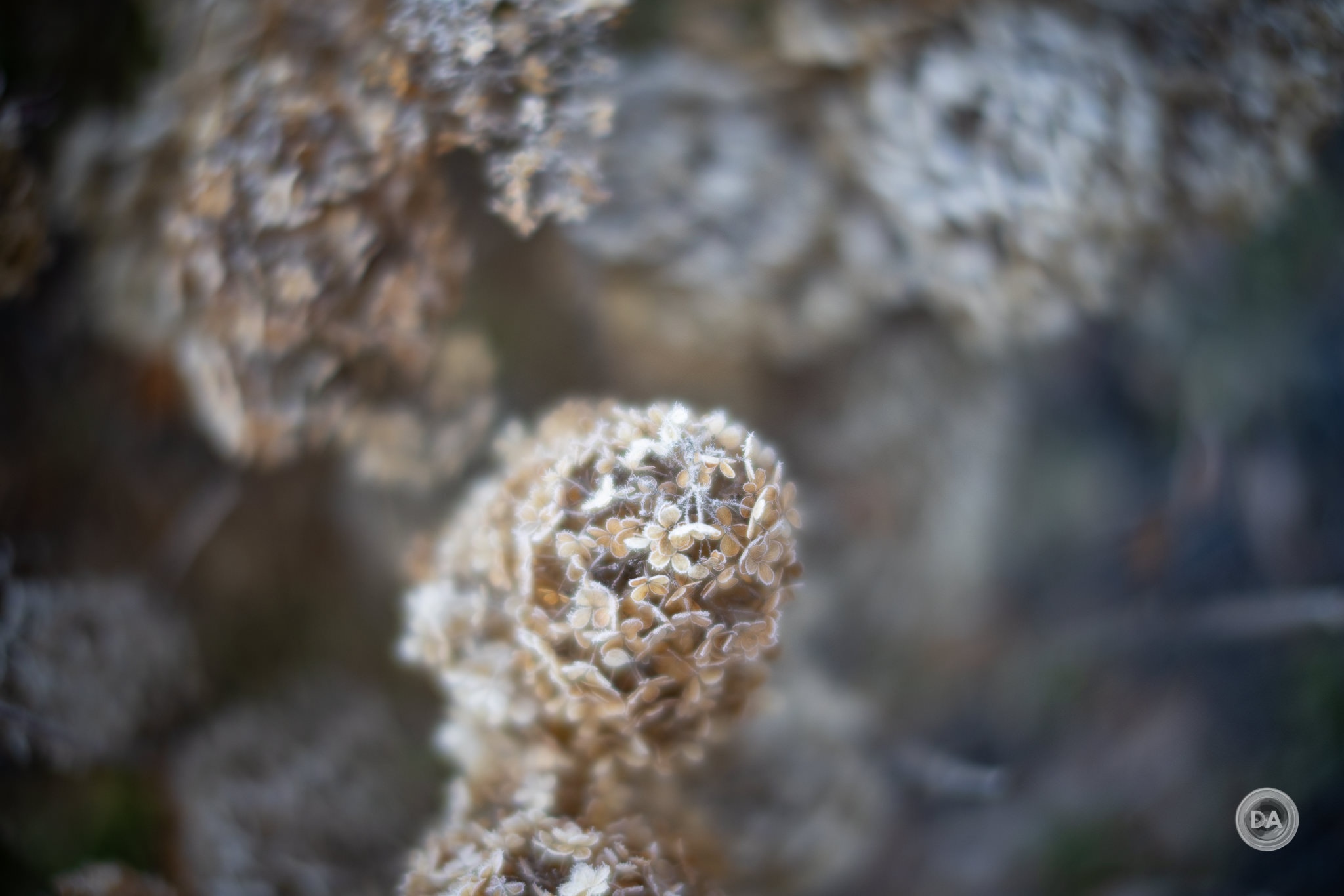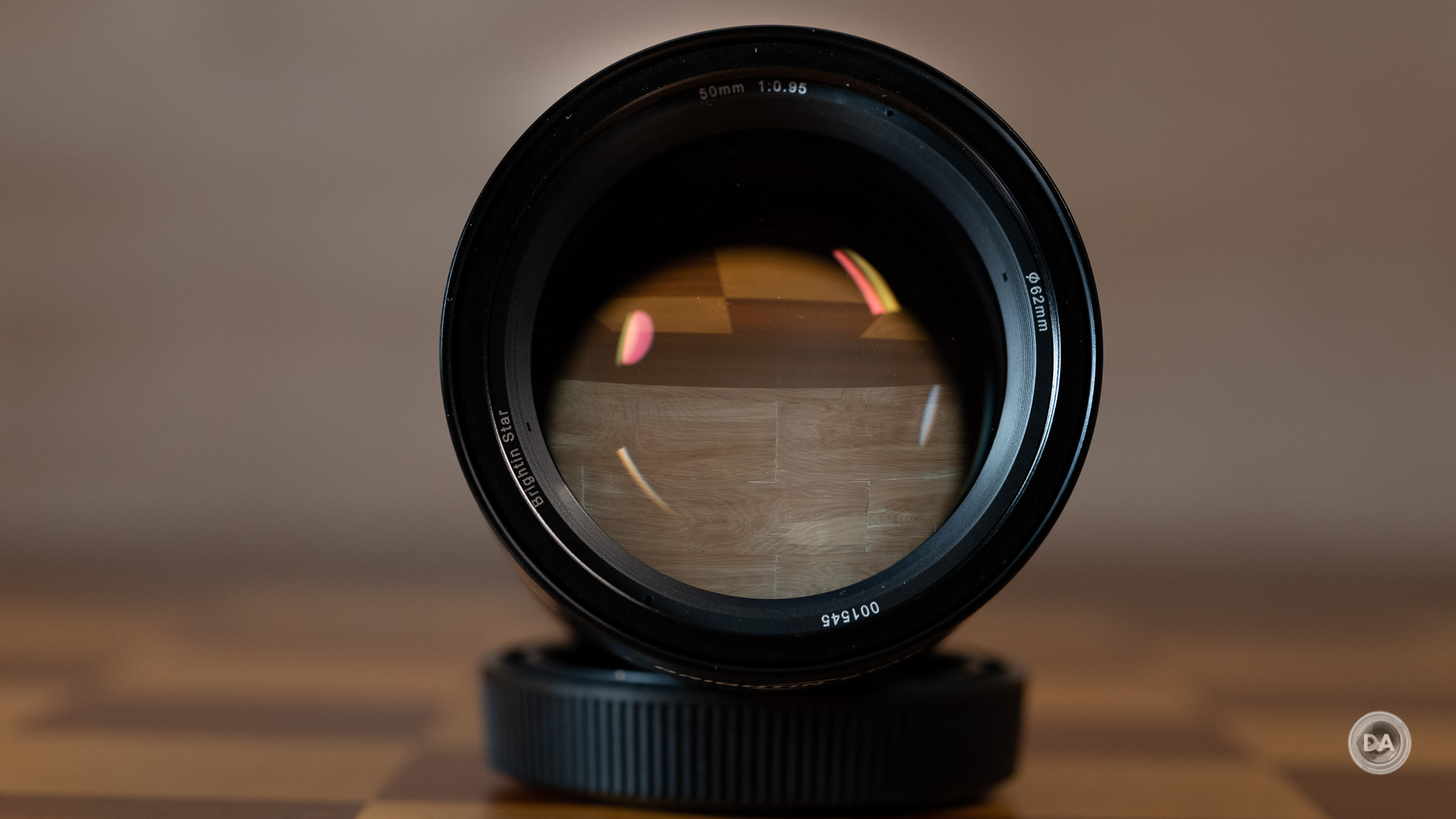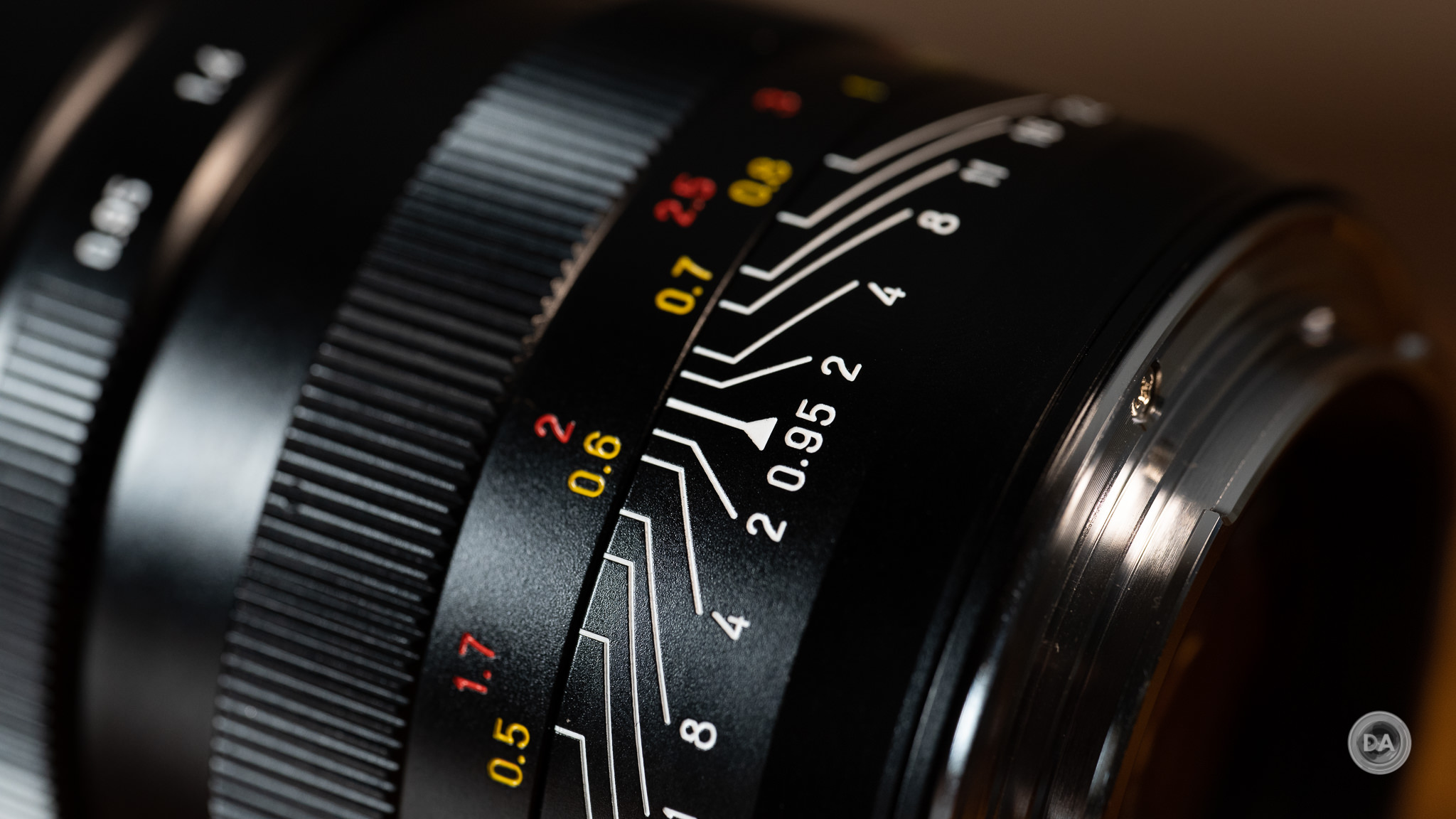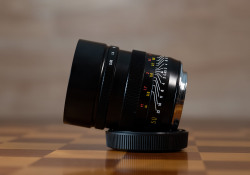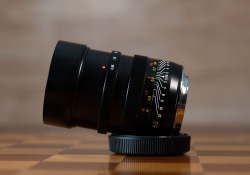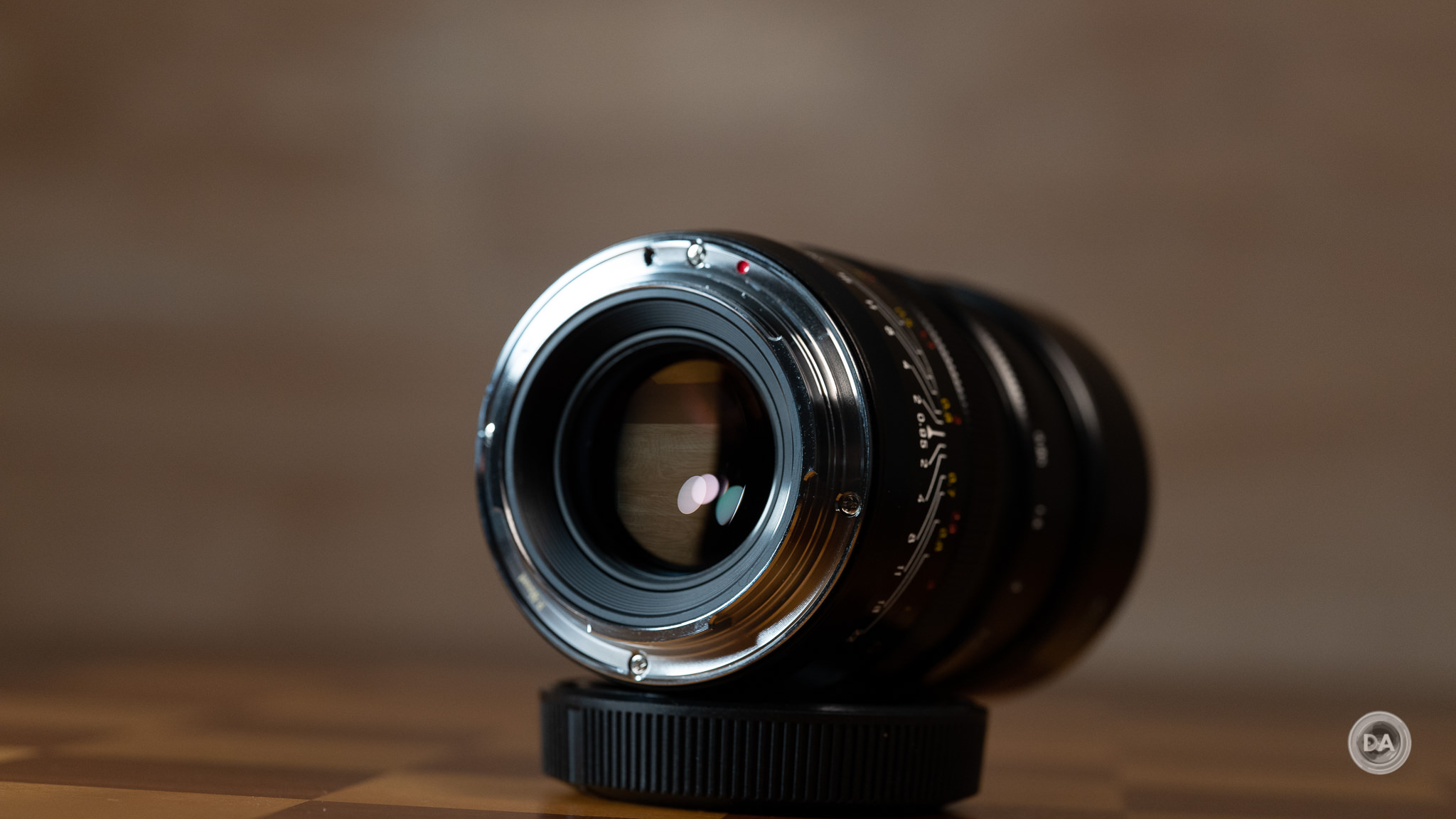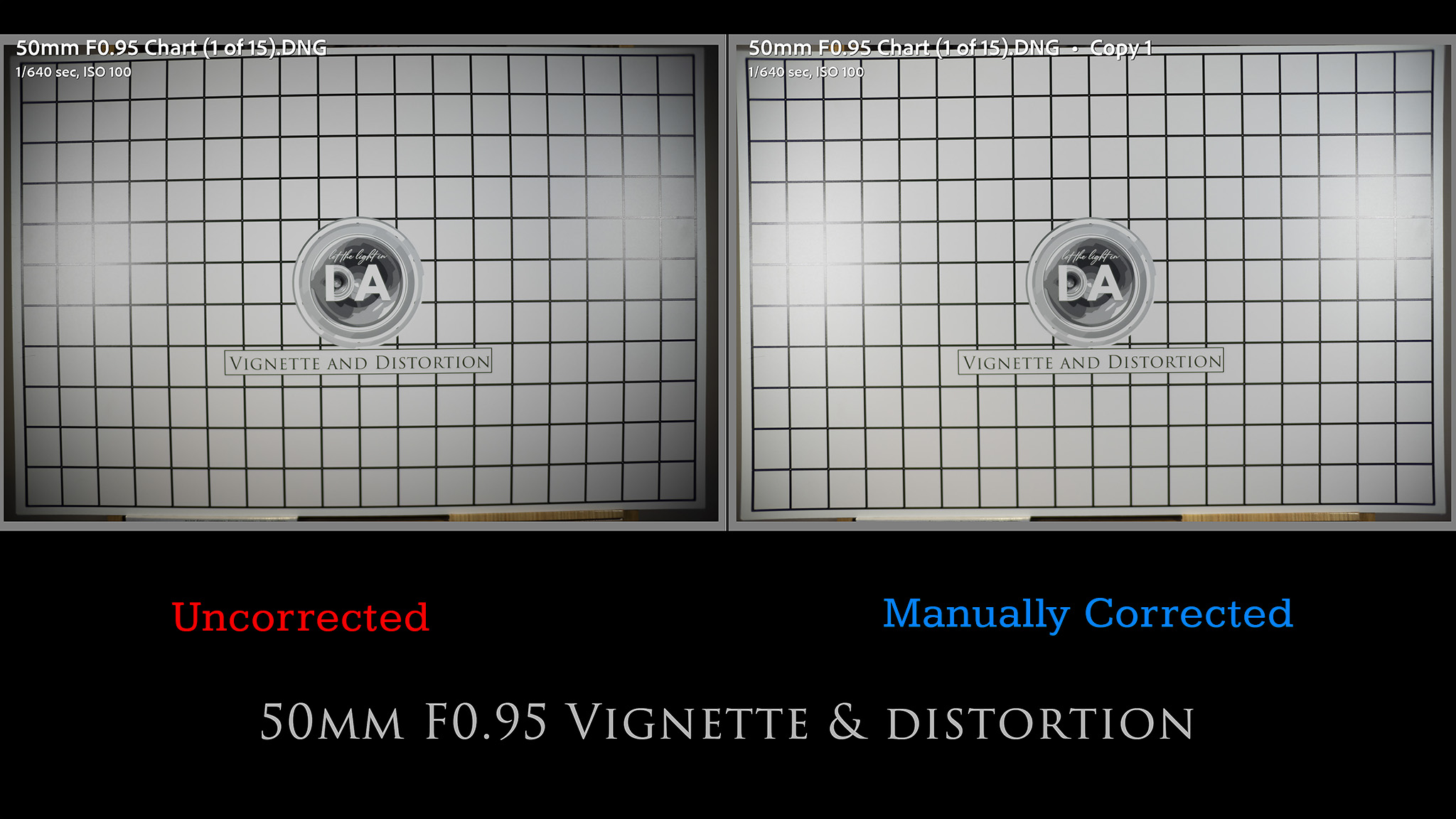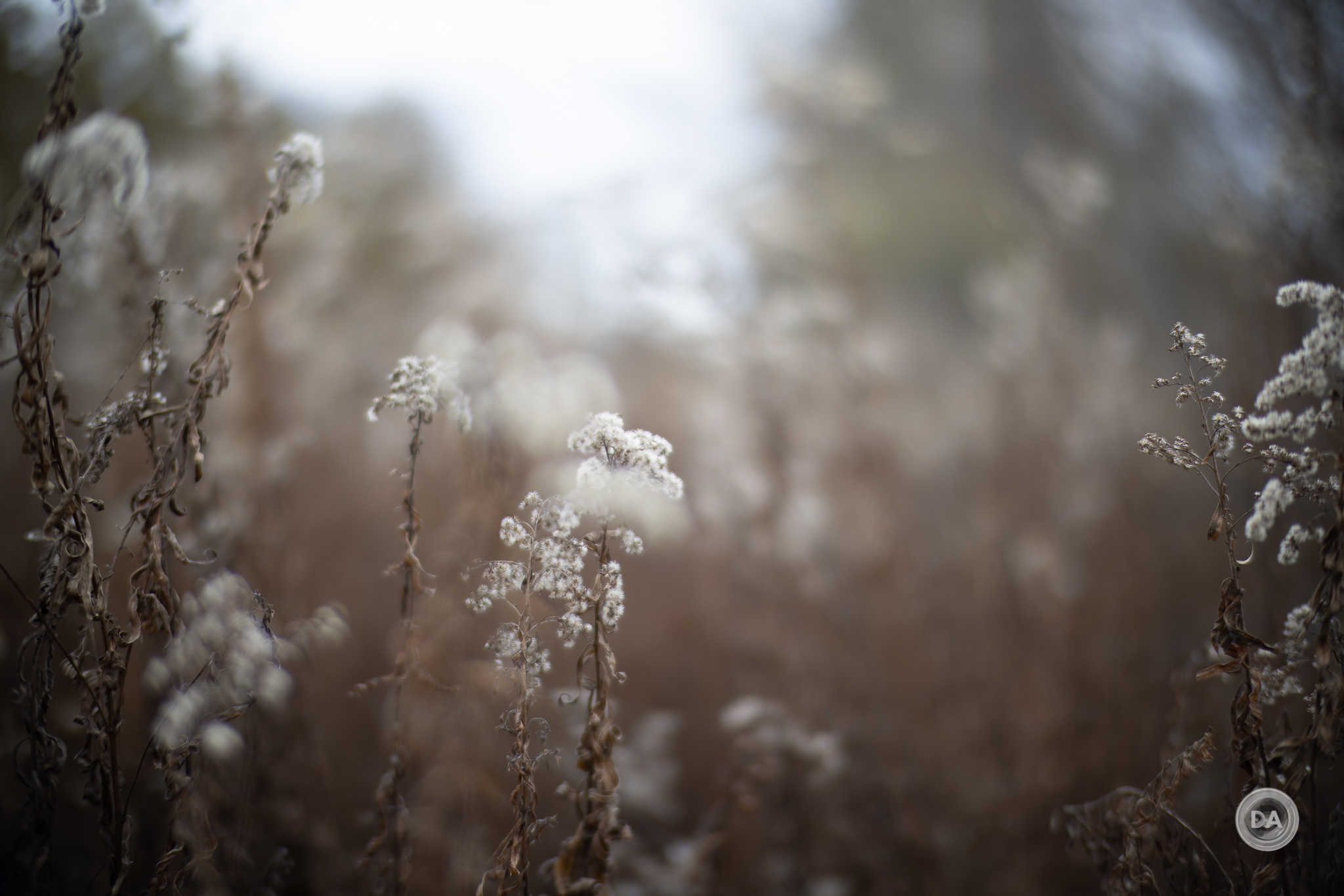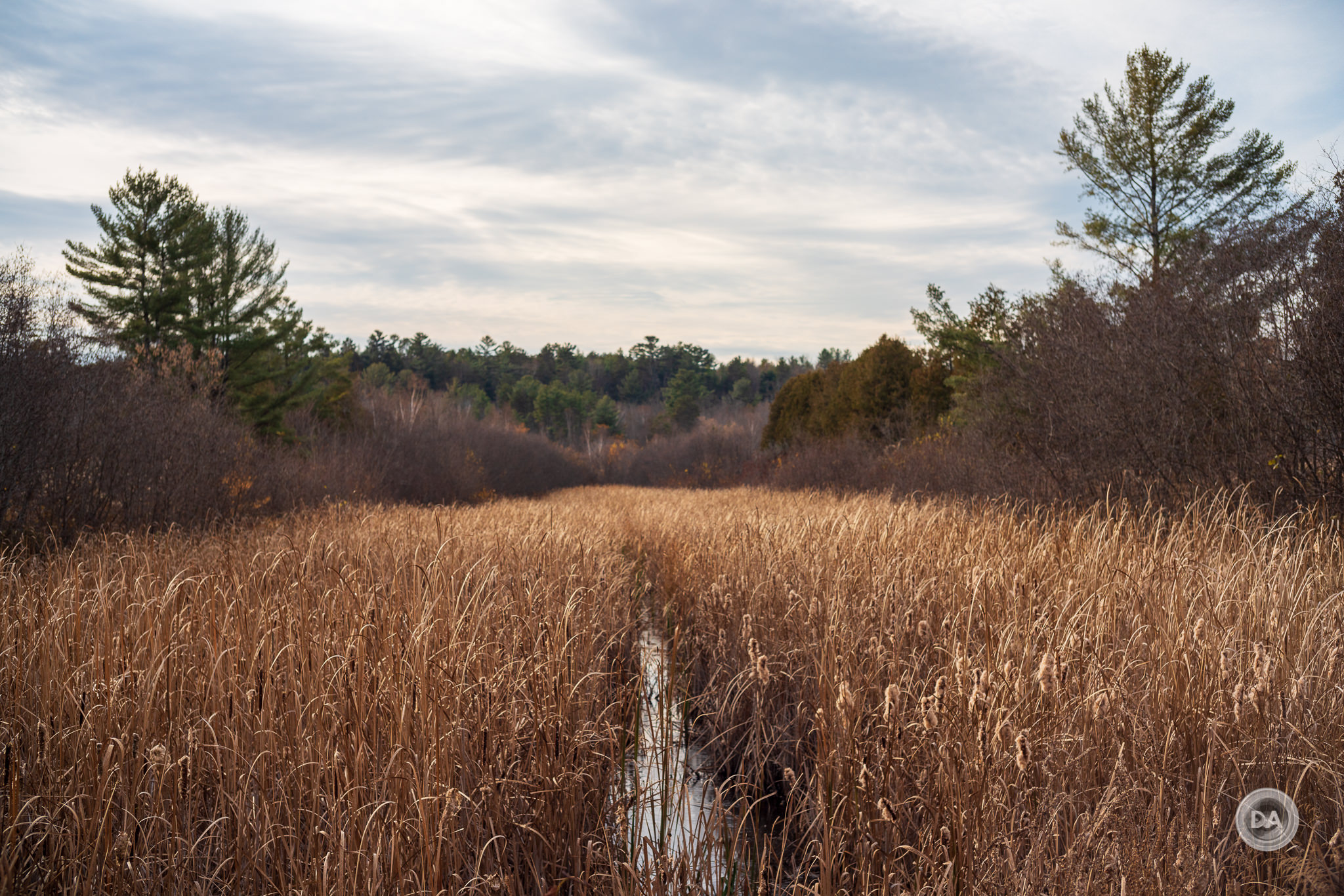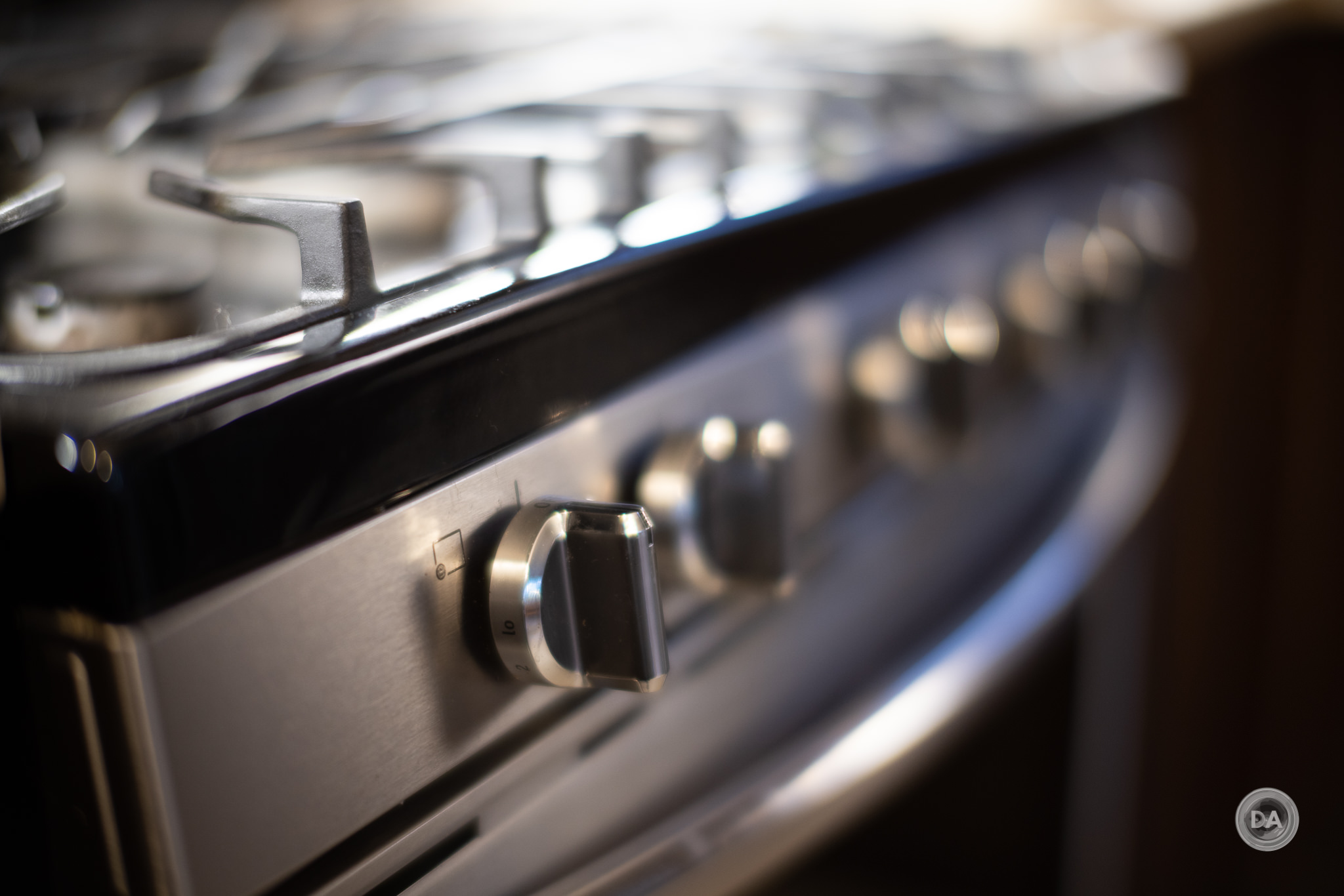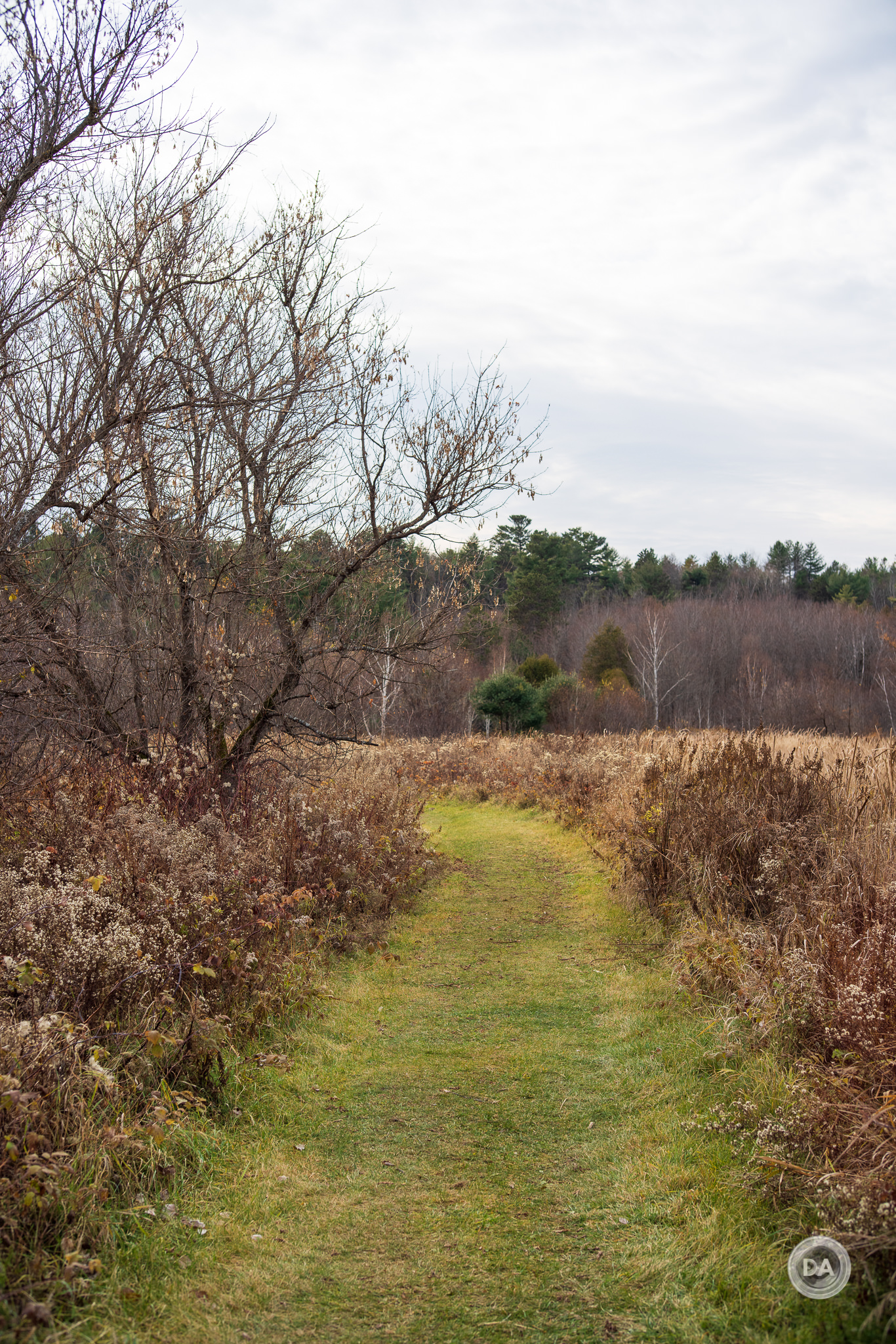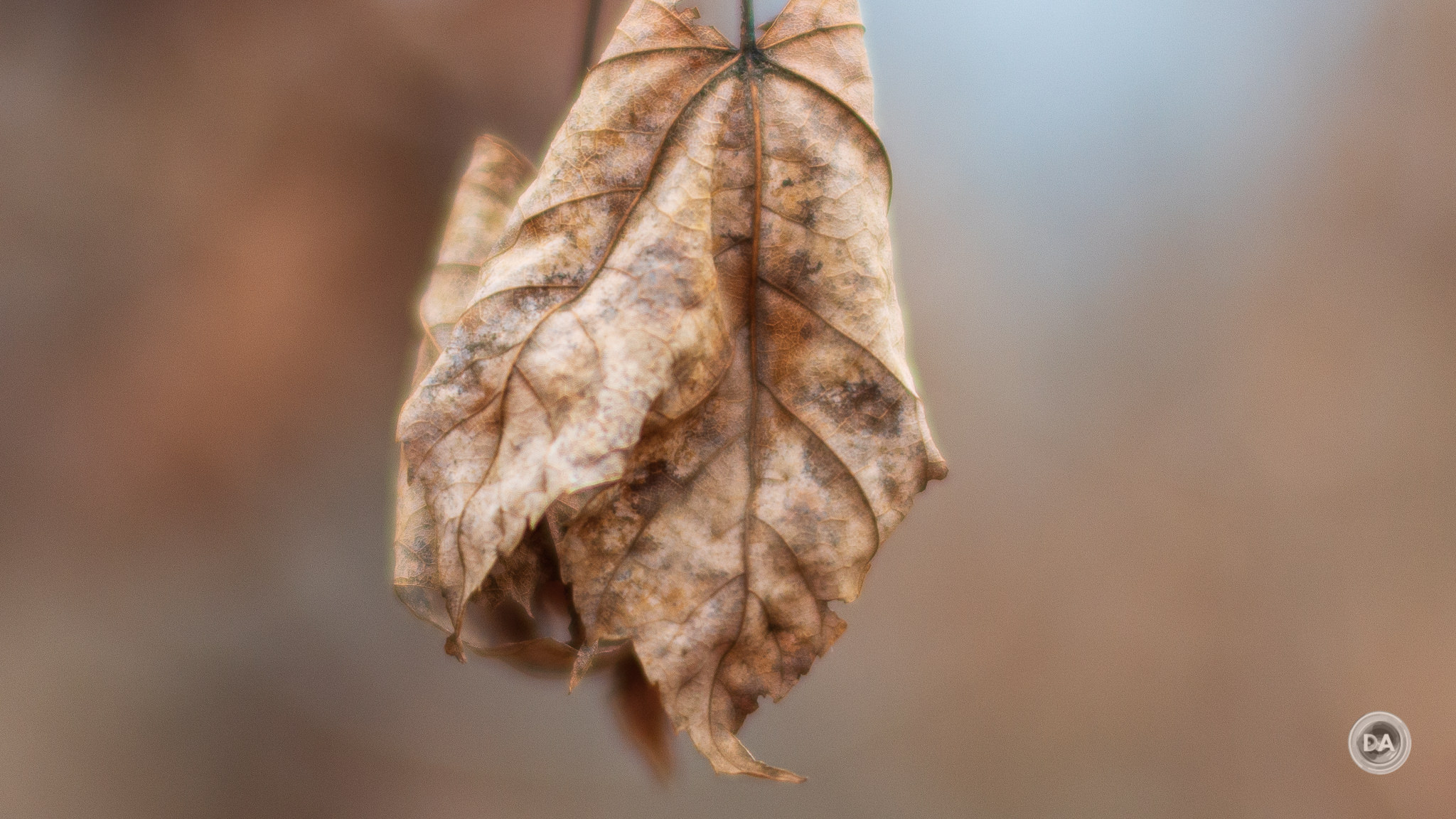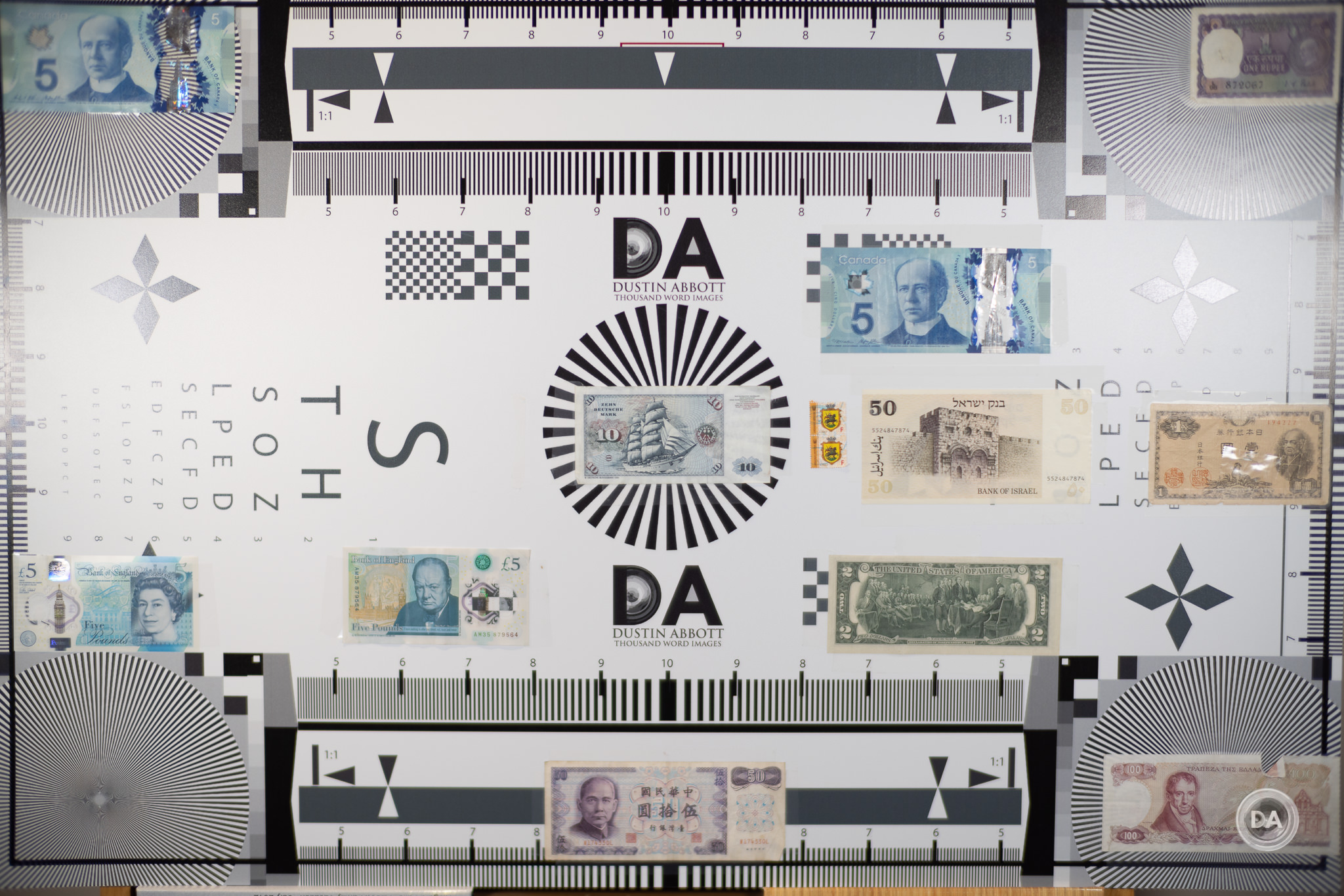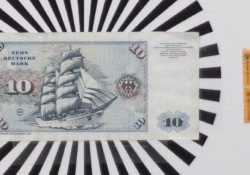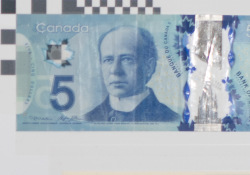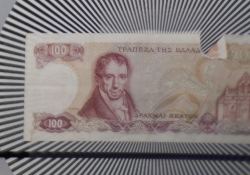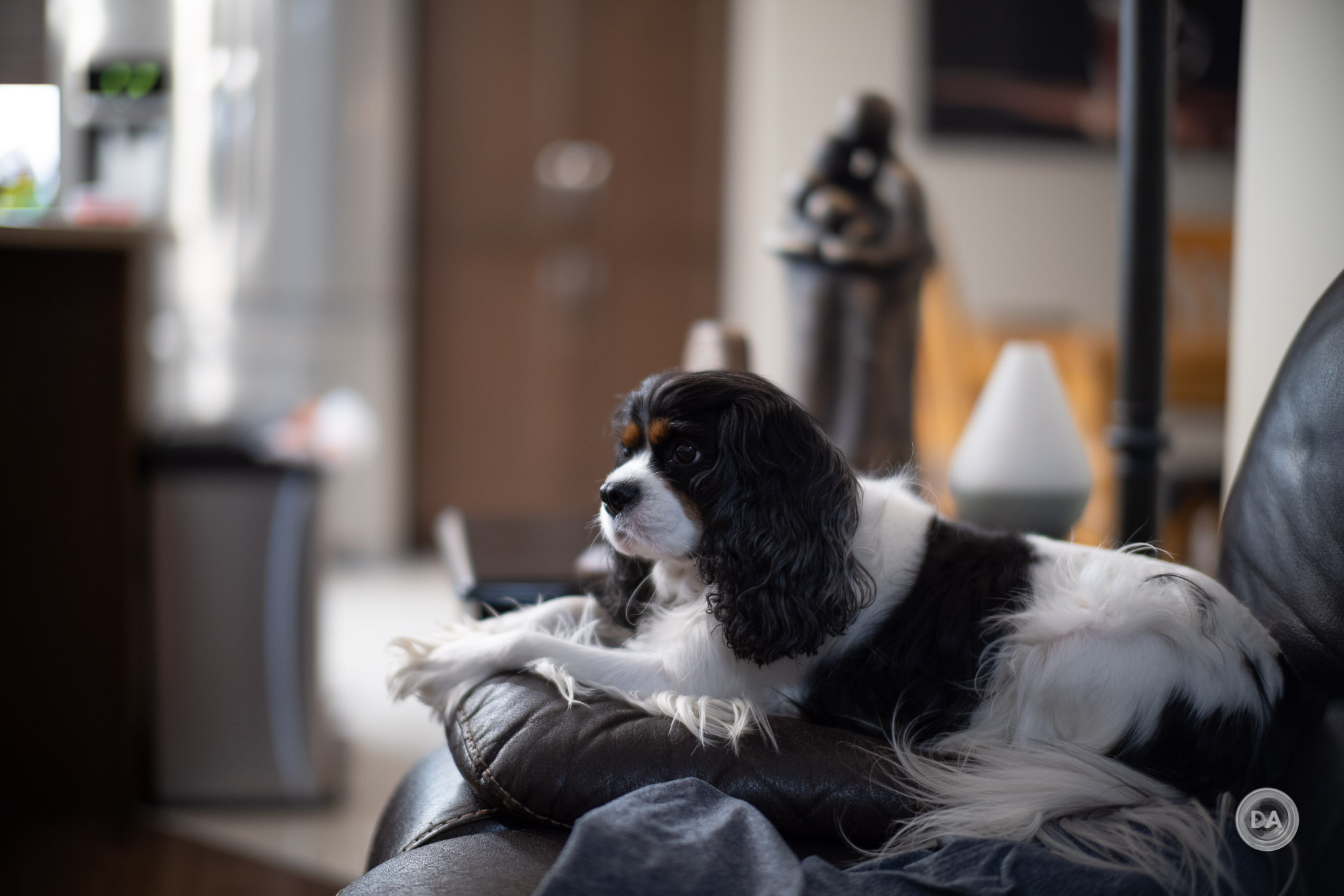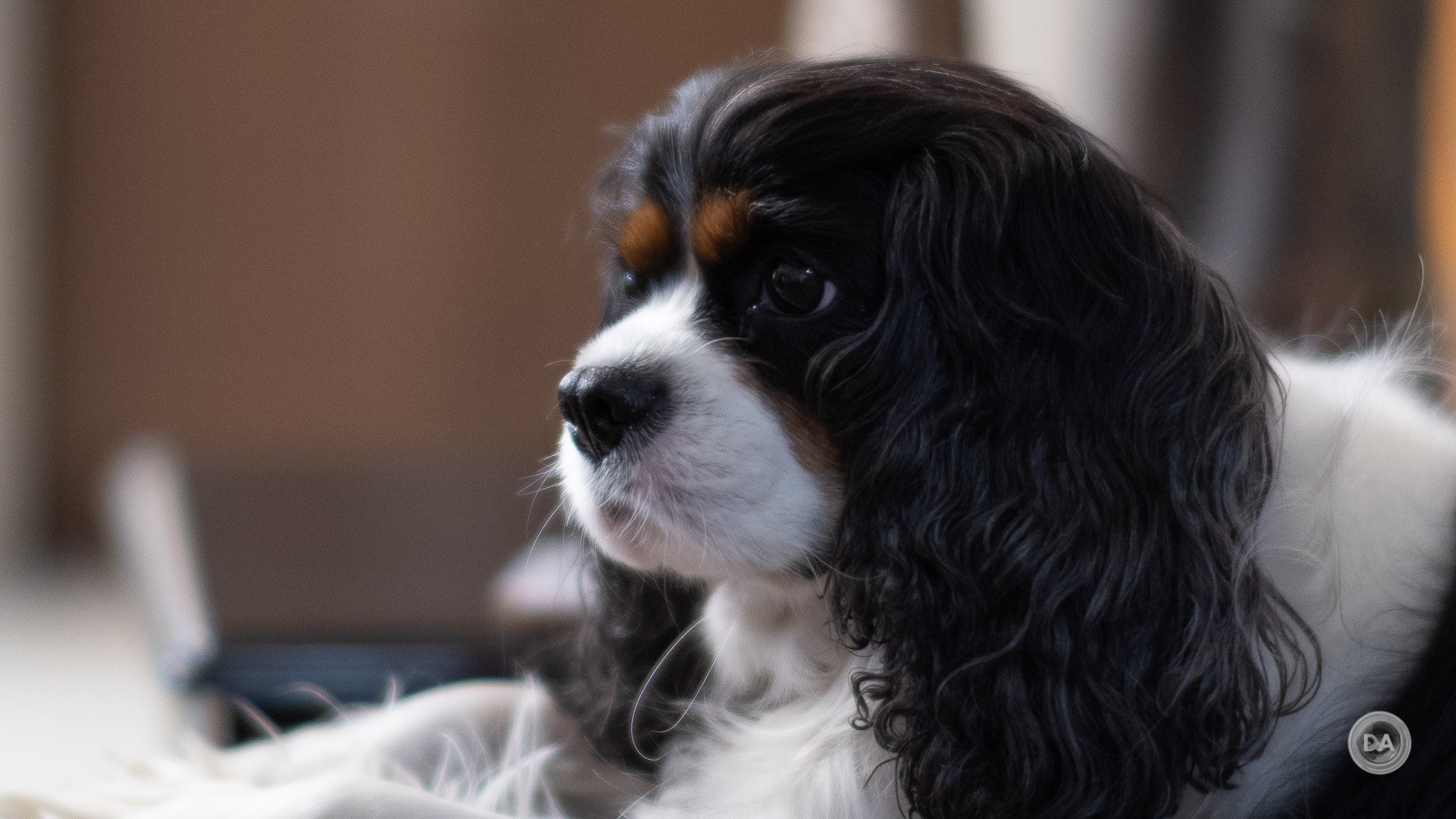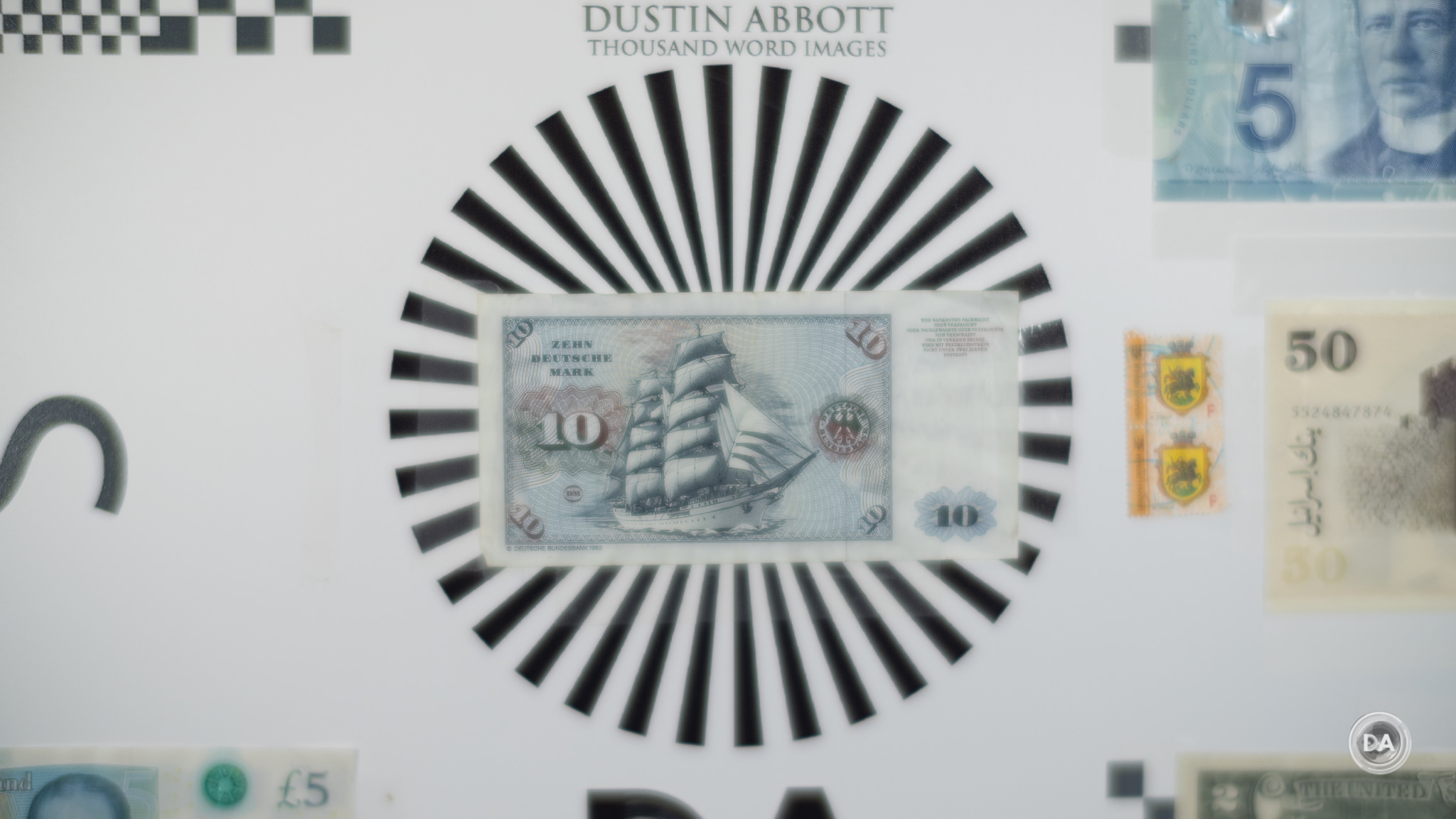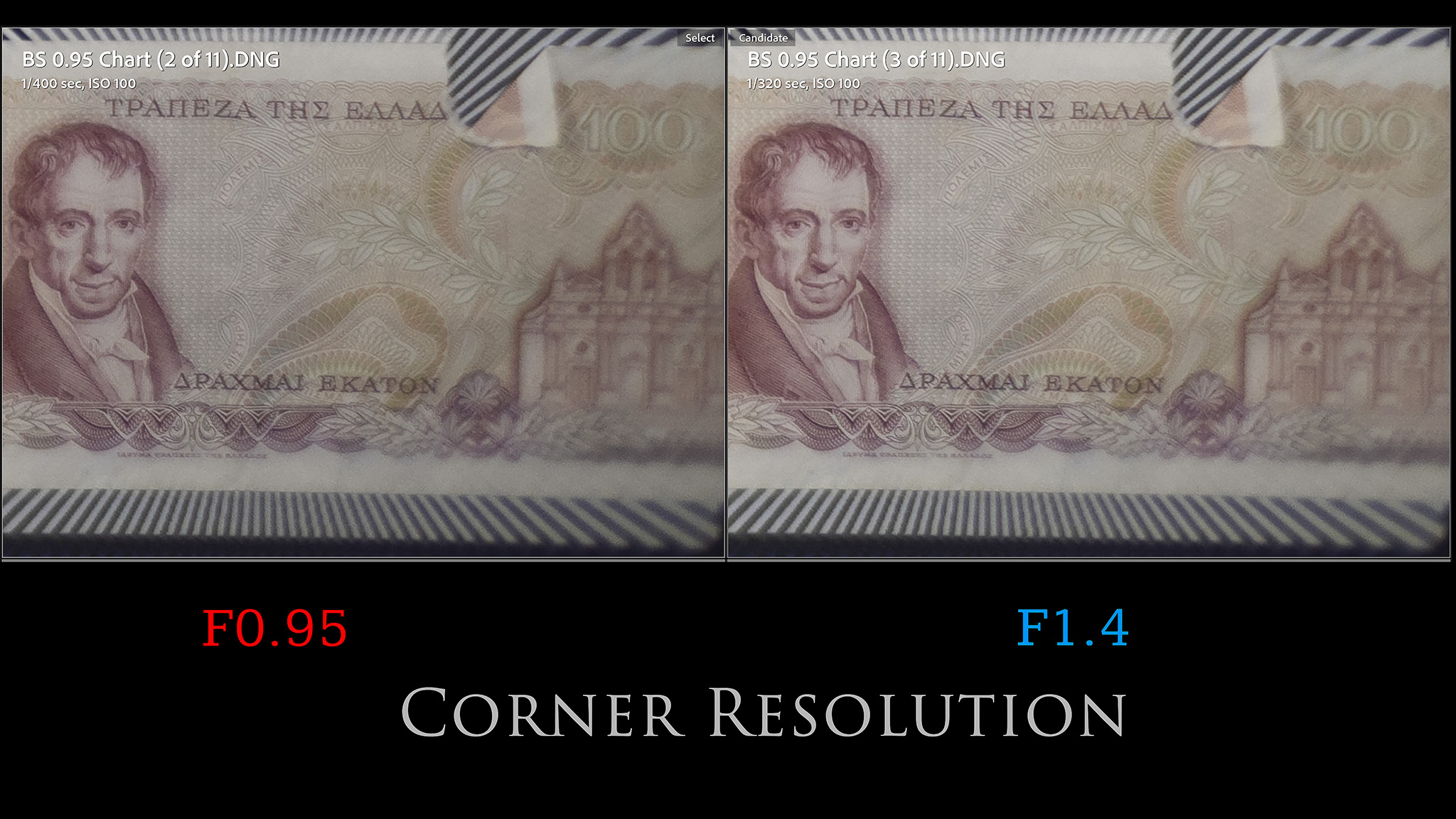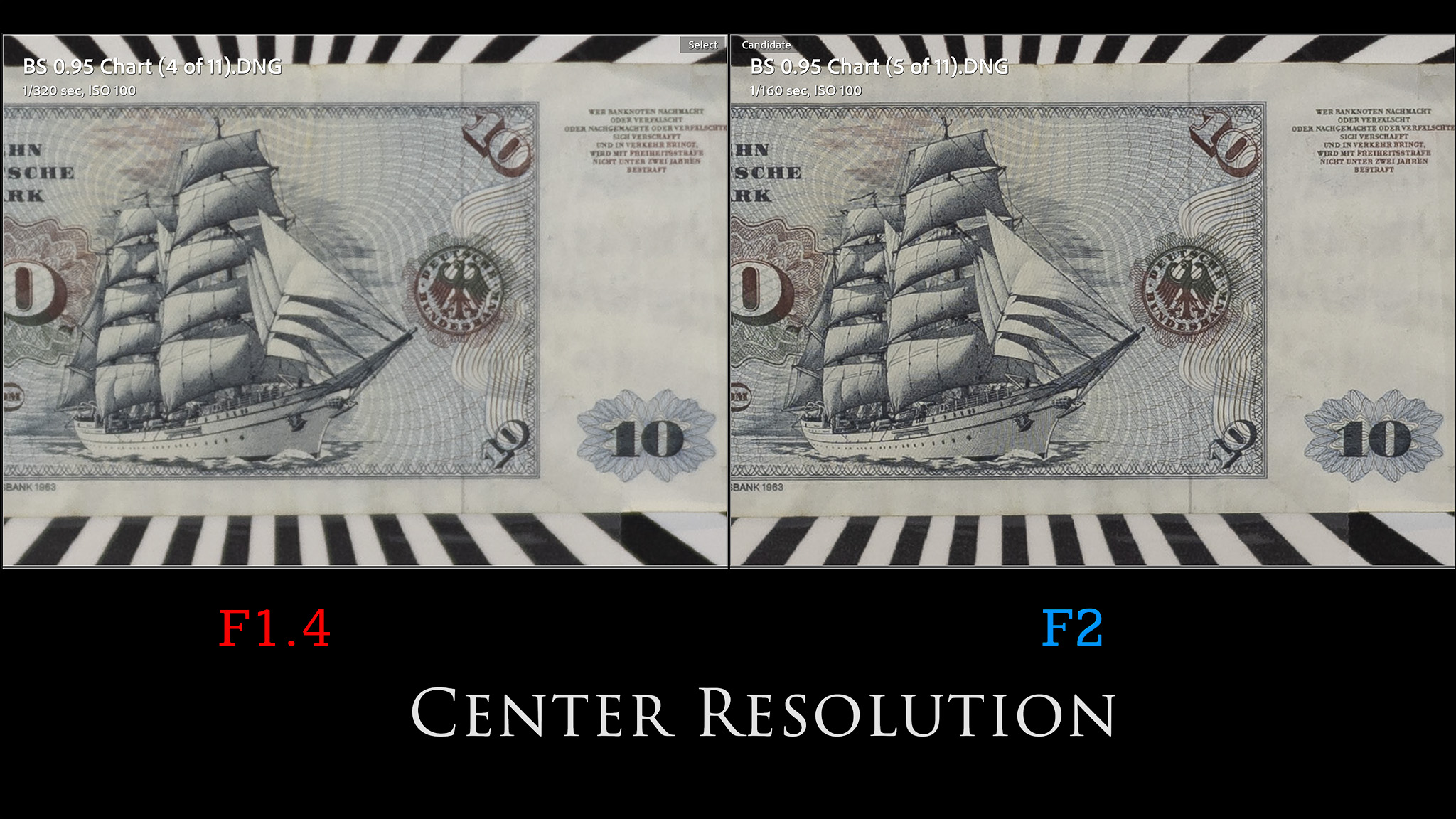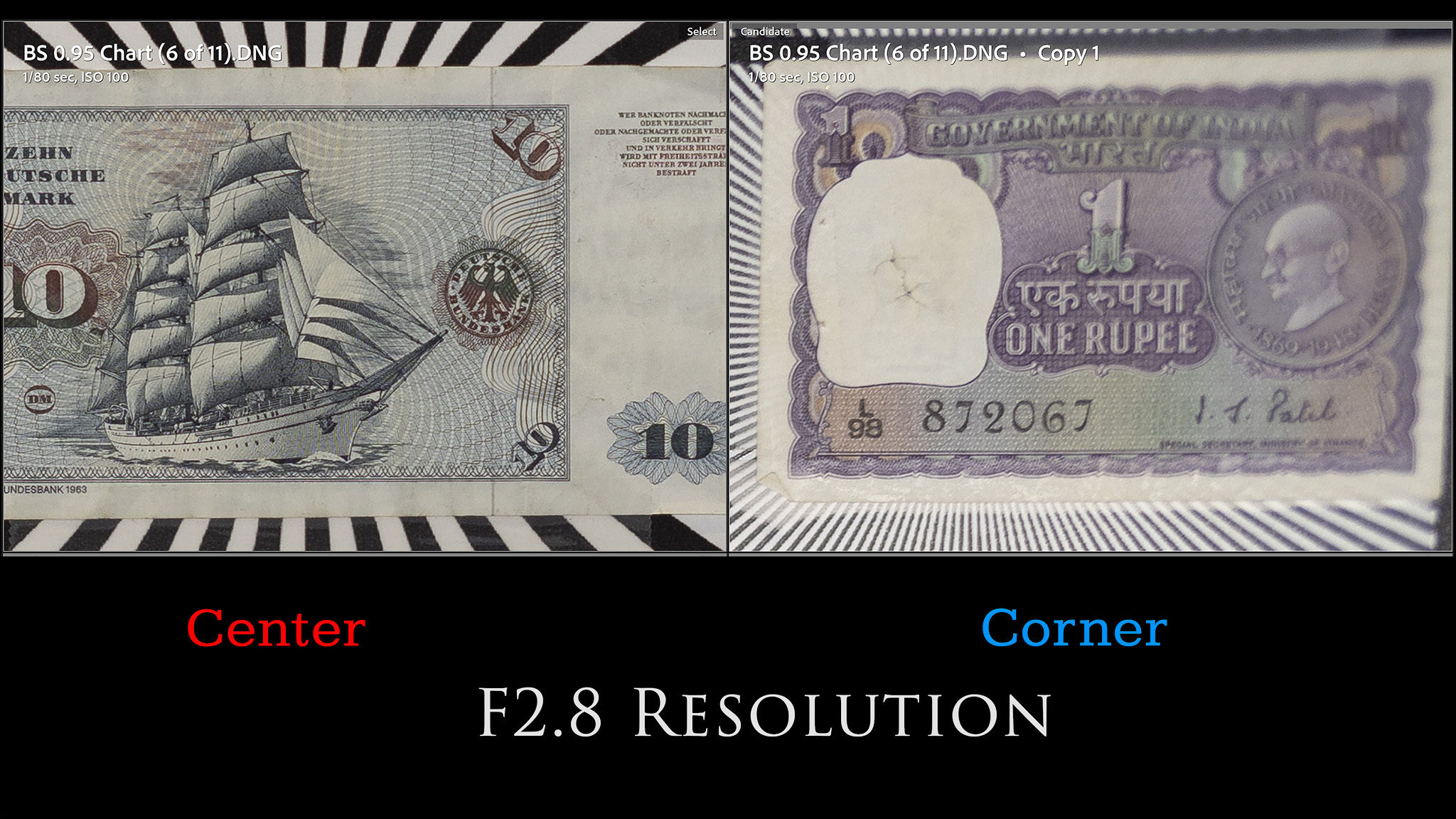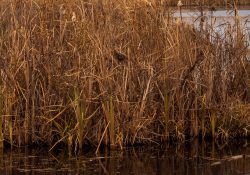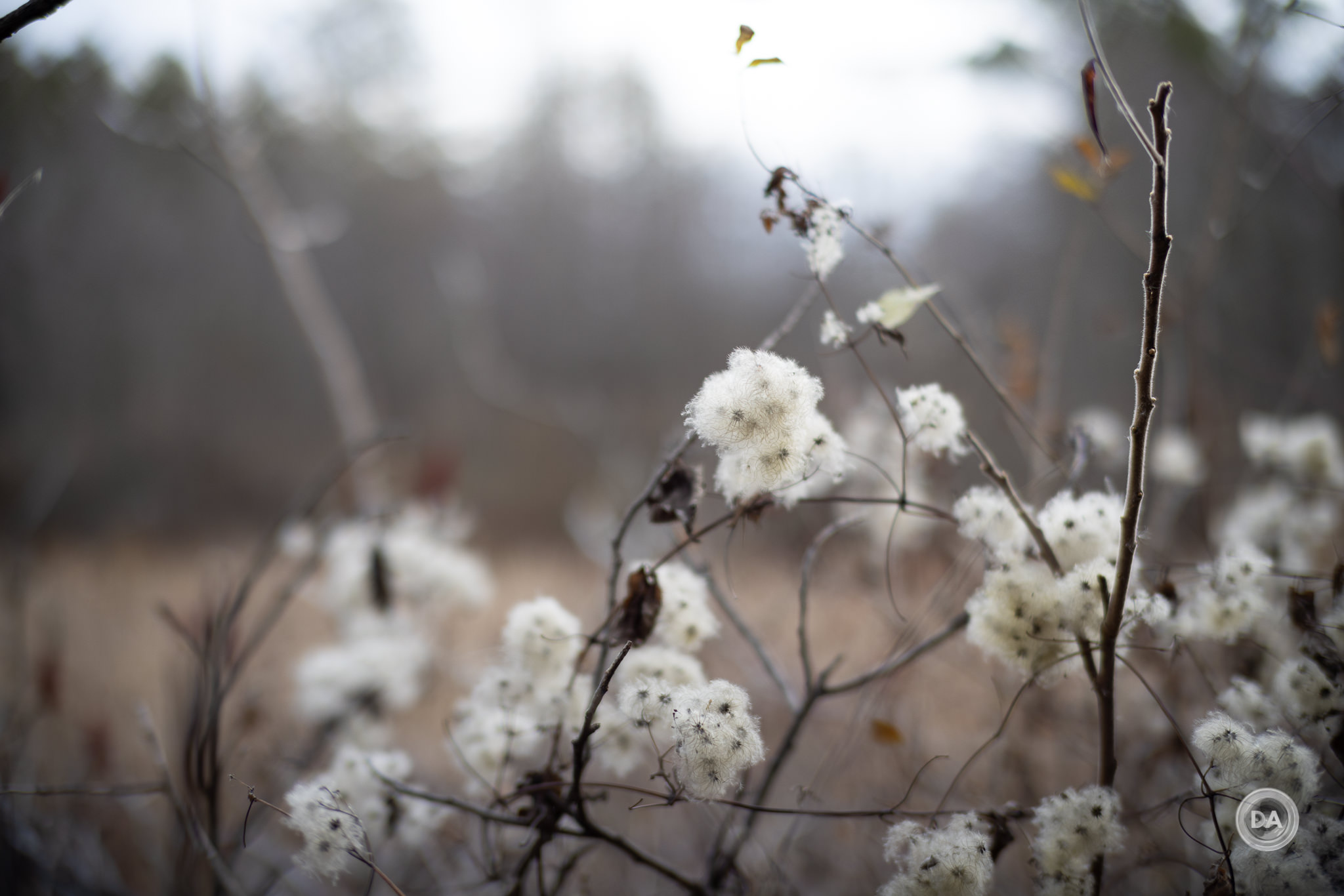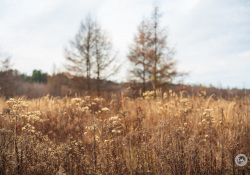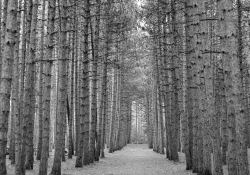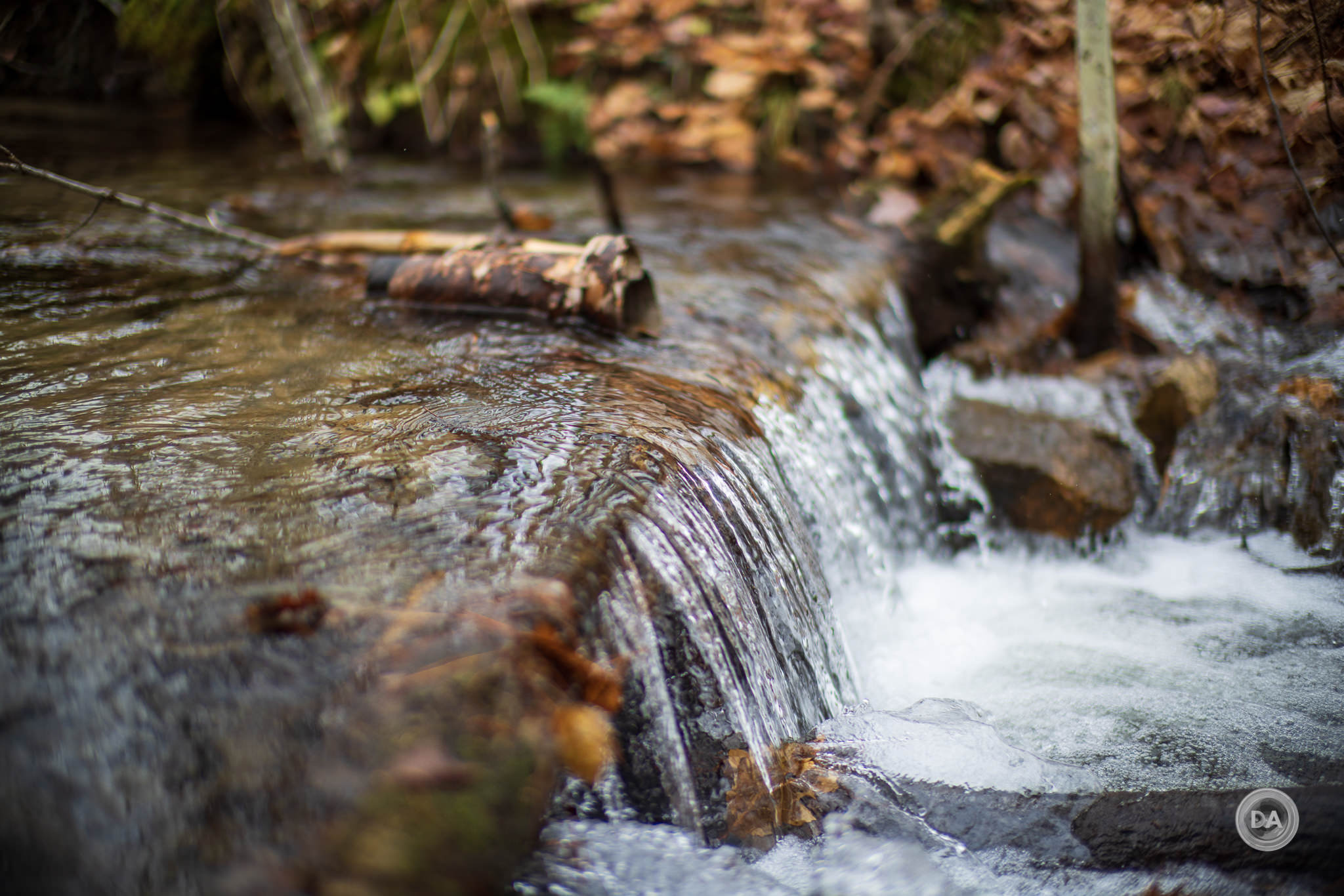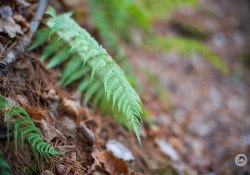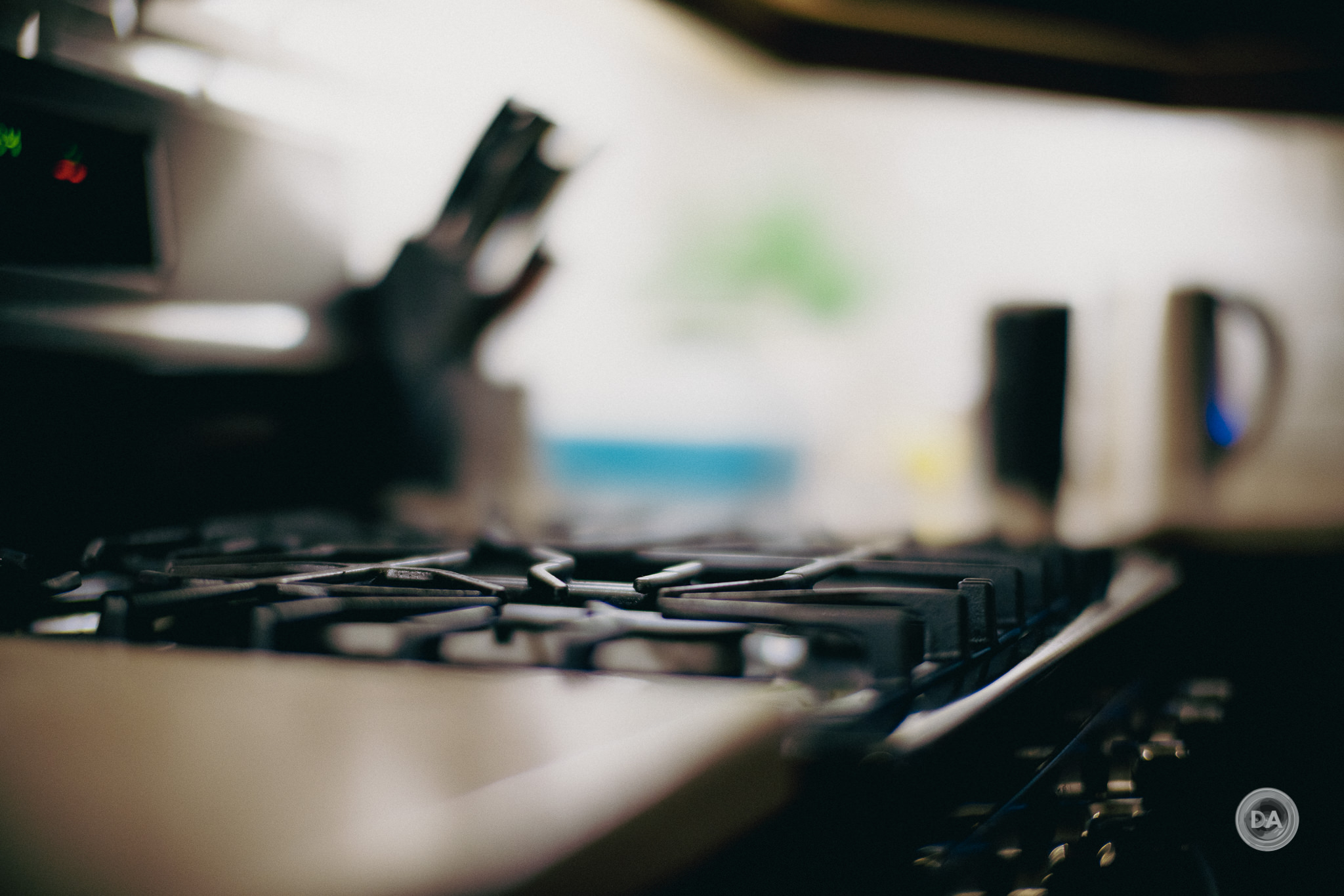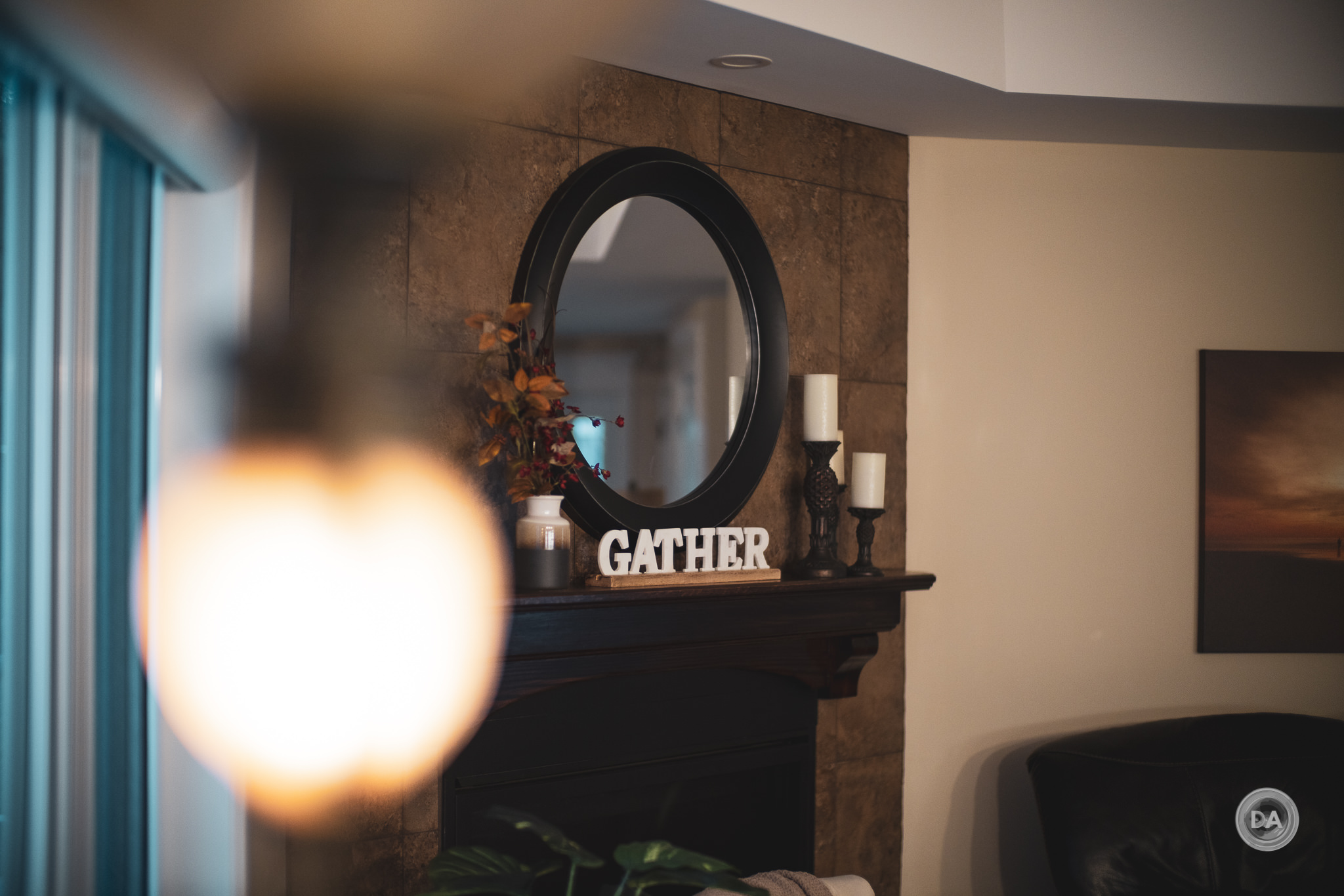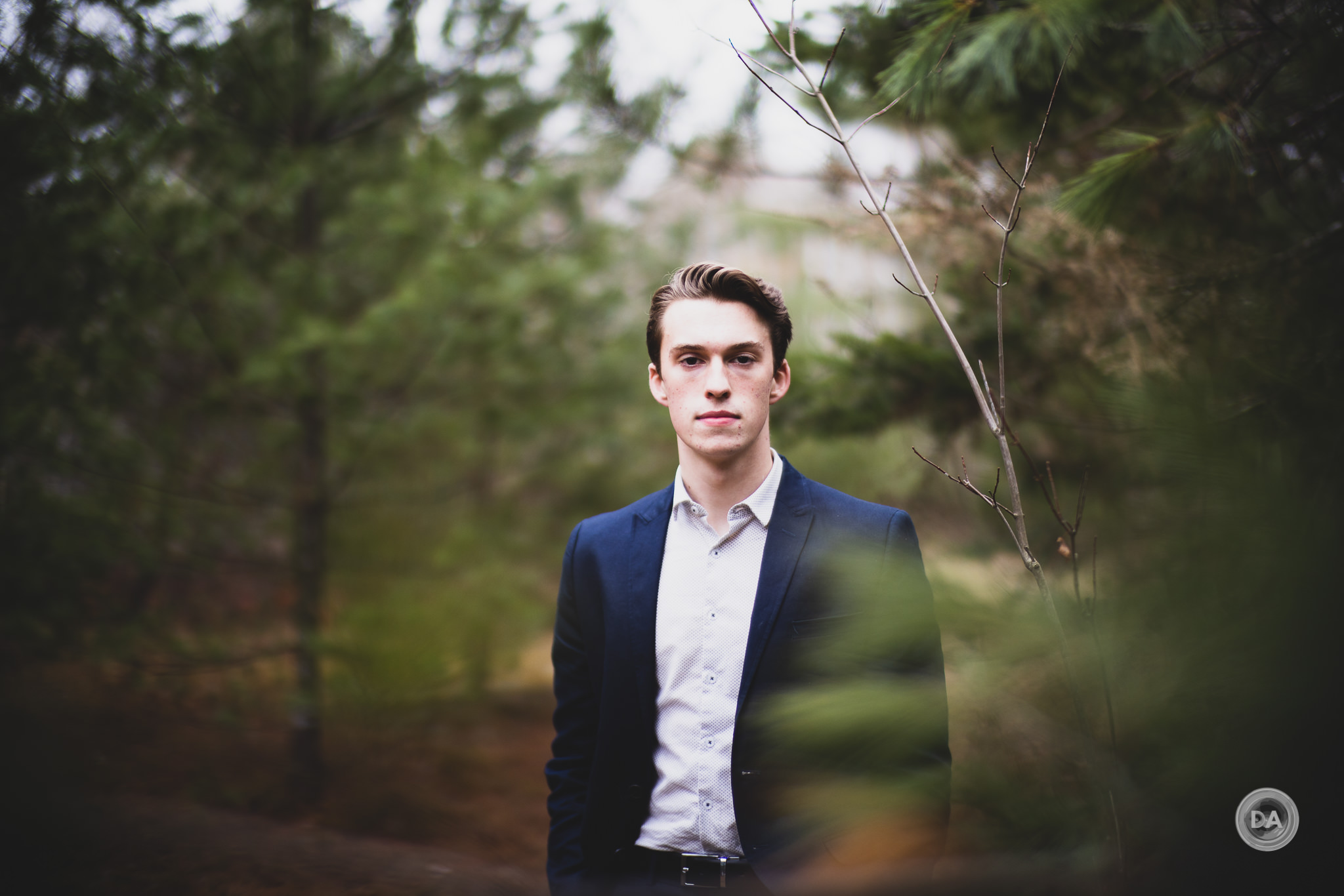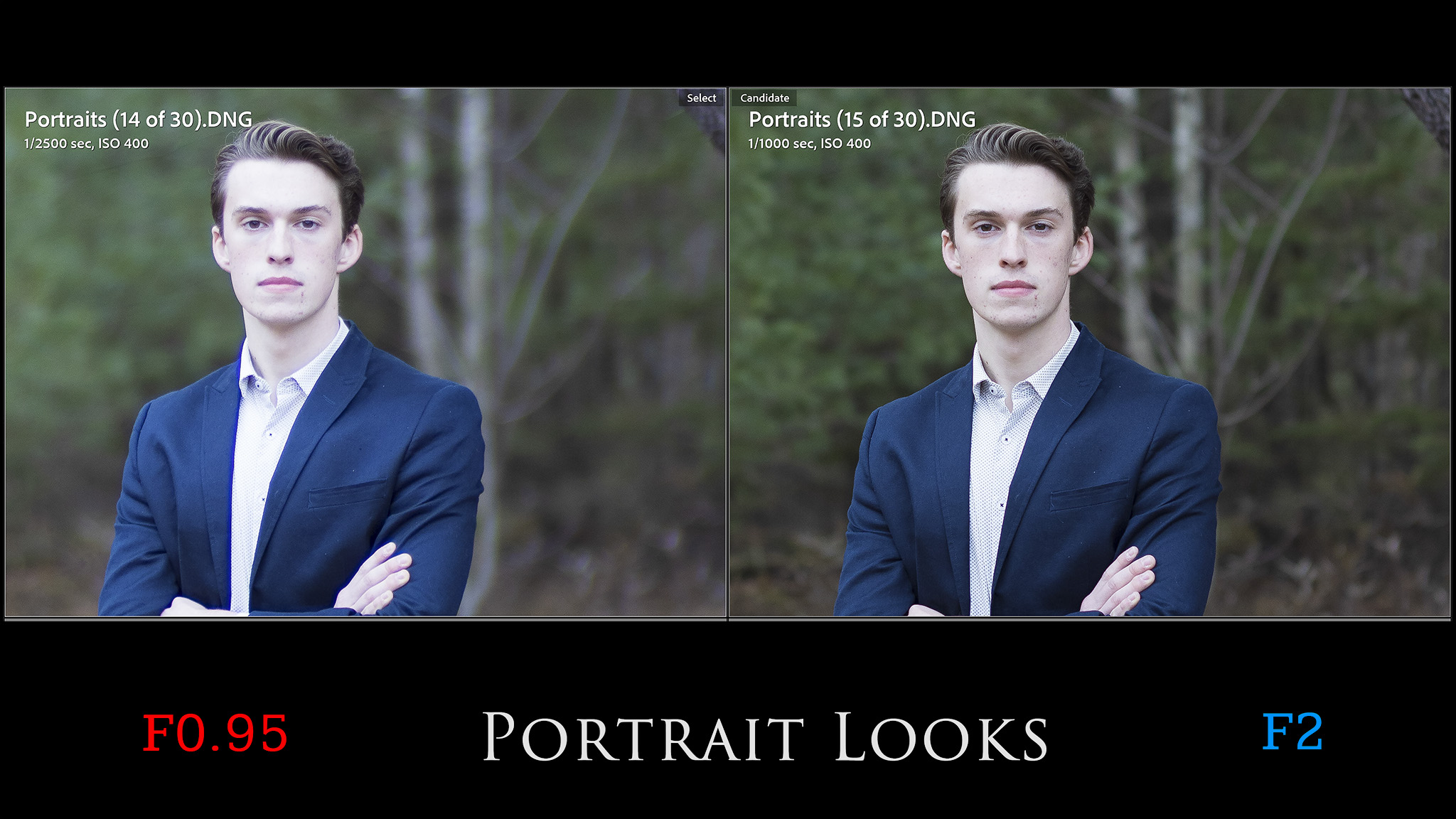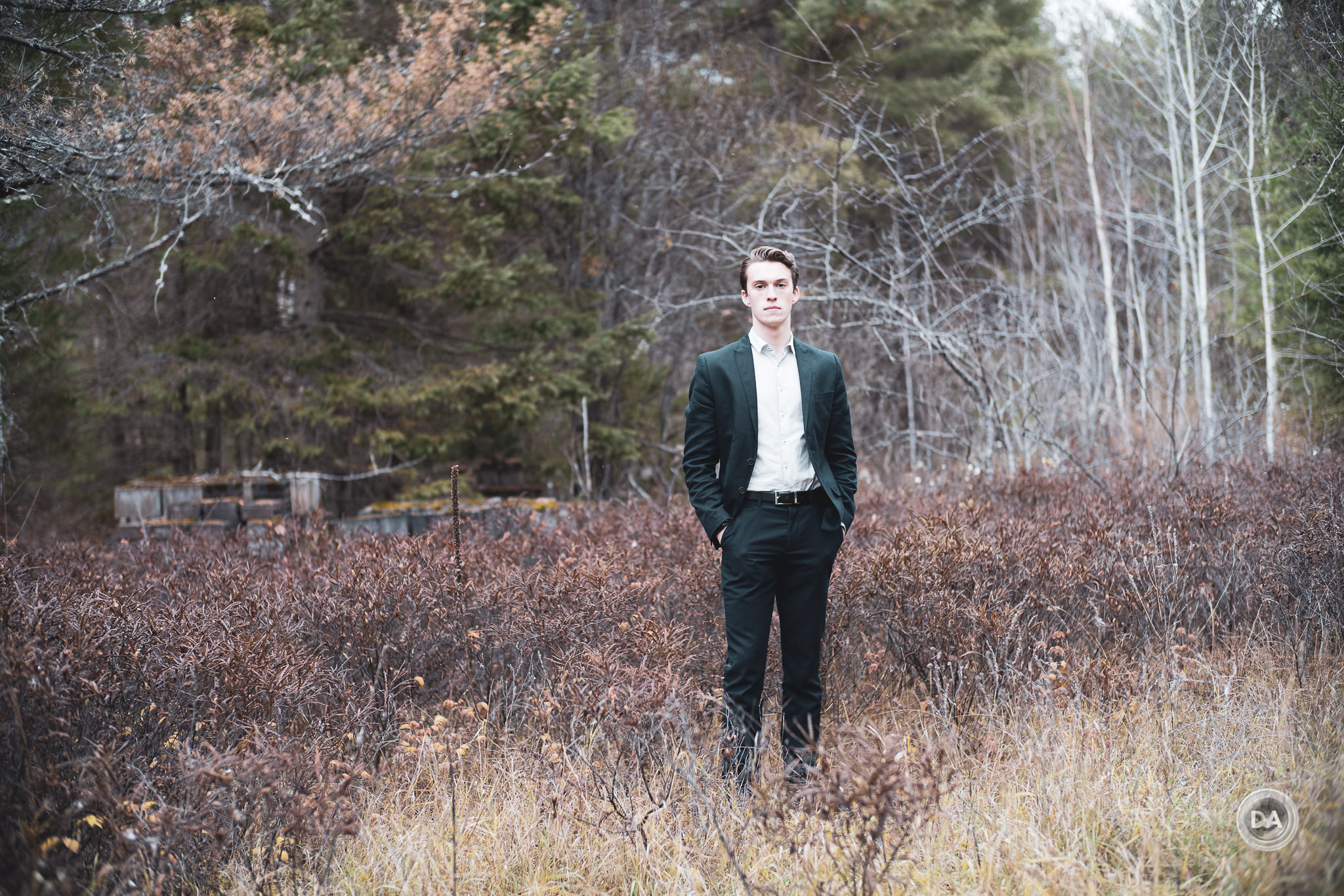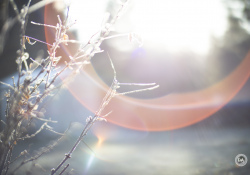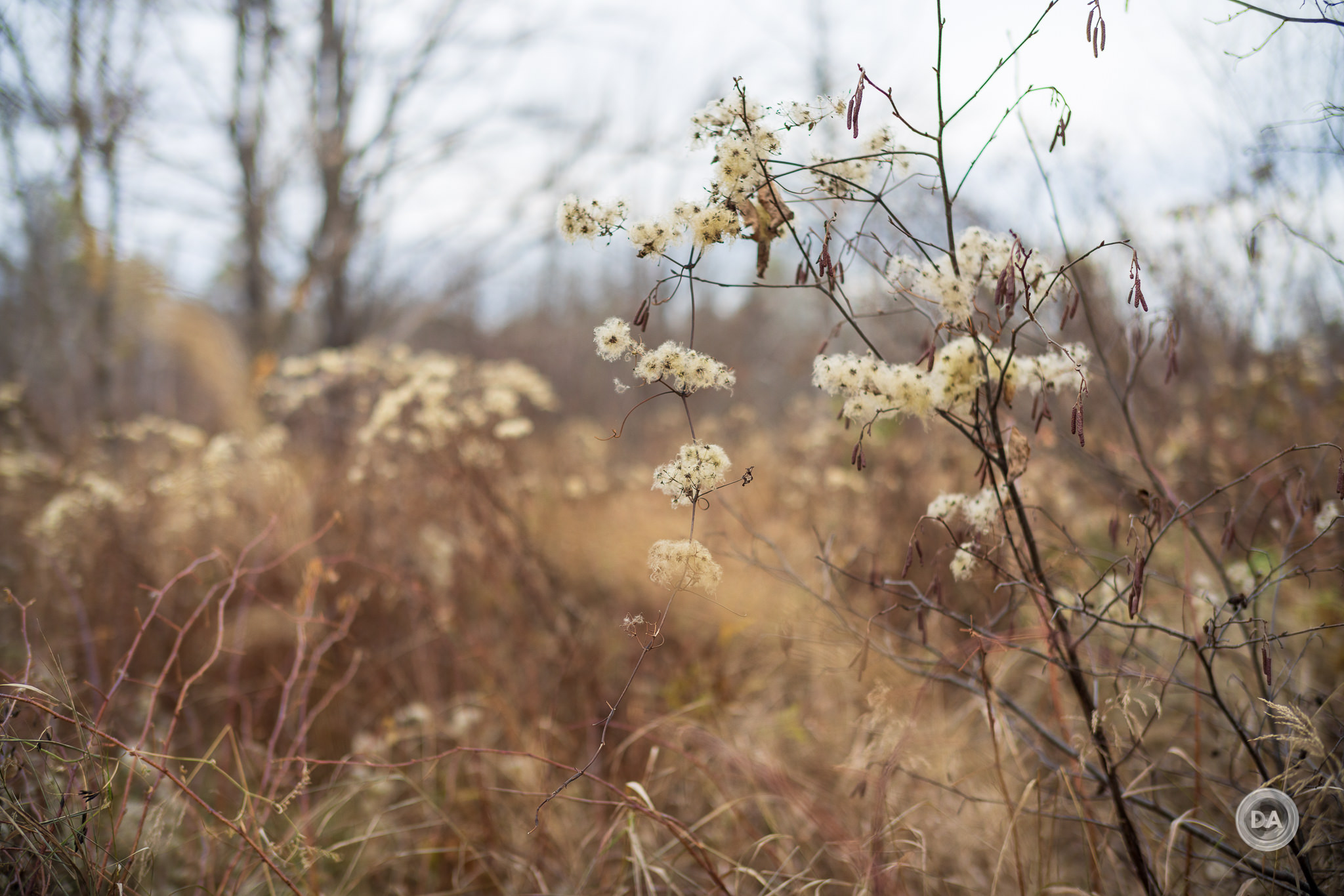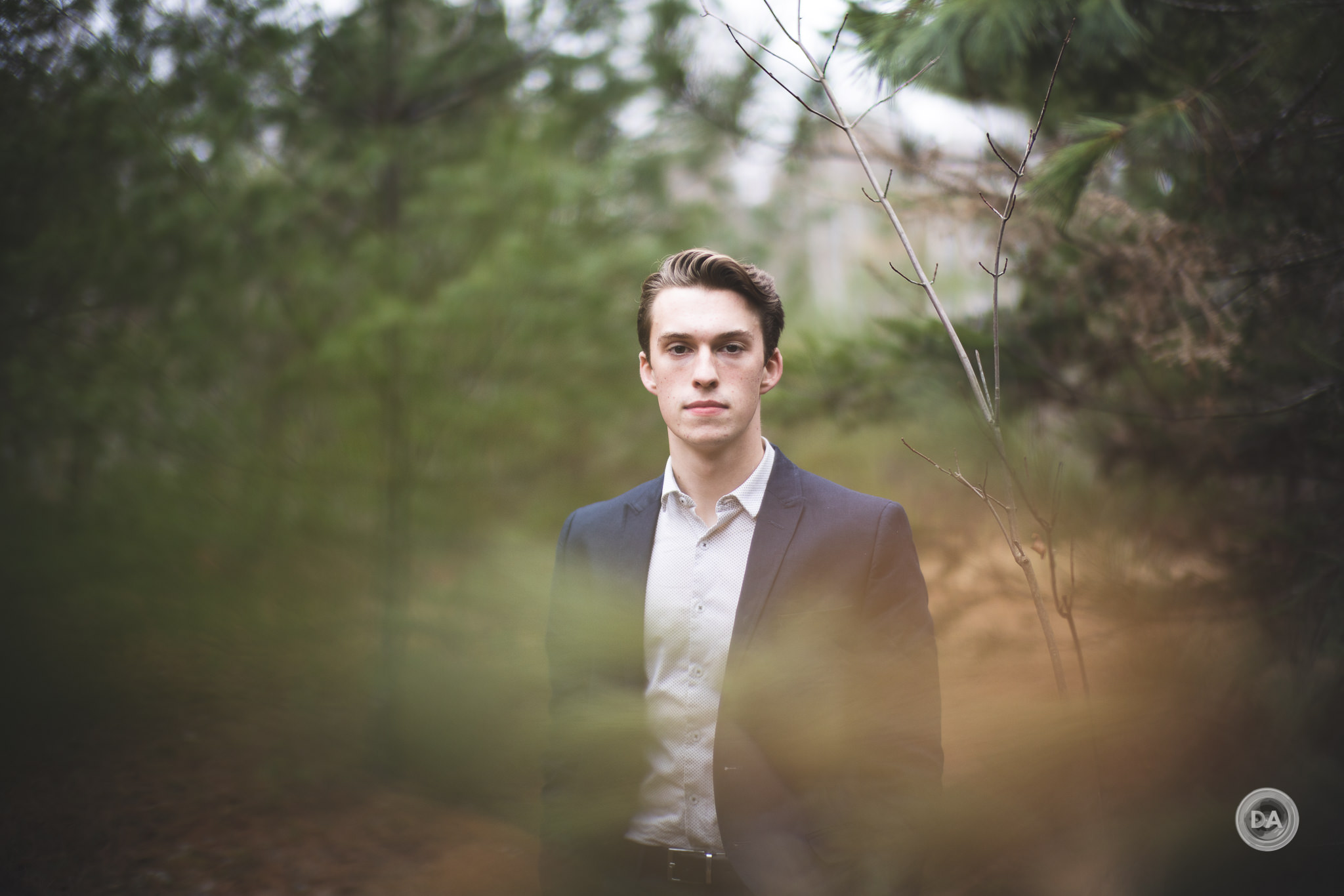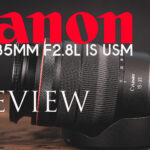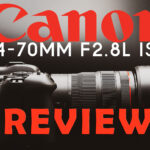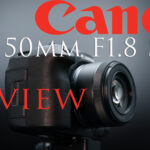Over the past few years, it has become increasingly common for what I call “Boutique Third Party” brands (small lens startups) to deliver some really interesting budget lenses. Many of the early lenses were designed for the smaller APS-C sensor, but recently I’ve seen more of them tackle the more challenging full frame image circle. That’s the case here, where lens company Brightin Star has released the Brightin Star 50mm F0.95 lens for Canon RF (reviewed here), Fuji X-mount, Nikon Z mount, Sony FE mount, and Sigma L mount. The Brightin Star 50mm F0.95 has a massive maximum aperture (a lot of glass in there!) and costs under $400. It is (like similar lenses) a manual everything lens, with a manual focus and aperture ring and no electronic contacts. This makes it easy for the company to sell for a variety of lens mounts, and the features of modern cameras help make up for the limitations and deficiencies of lenses like these. The lens metered well on my Canon EOS R5 which I used for this test, I was able to program the IBIS (In Body Image Stabilization) for the proper focal length so that I received stabilization for my shots, and the ability to use focus overlays and magnify the image in the viewfinder allowed me to get accurate focus results even the extremely shallow depth of field that a lens with a maximum aperture of F0.95 produces.
There are always huge challenges when engineering extreme lenses (and any lens with a maximum aperture of F0.95 qualifies as extreme). The lens is often fairly large and heavy due to the large and heavy glass elements inside. Contrast near that maximum aperture is typically somewhat poor, and such a lens is often flare prone due to so much glass. The Brightin Star 50mm F0.95 suffers from some of those shortcomings, to be sure, though there are also some huge redeeming qualities. There is something very special about the rendering from large aperture glass which makes images more than the sum of their technical parts. Being able to produce incredibly shallow depth of field shots like this is that draws people in!
Anytime you use a “manual everything” lens, you do for one of two primary reasons. One is if you can’t afford the equivalent autofocus lens, which typically will cost a LOT more. But the second reason that some of us will use manual focus lenses is for the love of the organic process of shooting slowly, more deliberately, and with a lot of thought into the art of making images.
The last lens with a massive maximum aperture like this that I tested was the Laowa 35mm F0.95 Argus lens; another extreme instrument. There are definitely some similarities, though the Laowa is the more expensive lens and has a few more premium features. That lens was clearly not for everyone, and neither is this 50mm F0.95, though the price point of about $390 USD makes this a far more accessible choice. But is the right choice for you? You can watch my definitive review here to find out…or just keep reading!
Follow Me @ Patreon | My Newsletter | Instagram | Facebook | DA Merchandise | Flickr | 500px
Thanks to Brightin Star for sending me this lens for review. As always, this is a completely independent review. *The tests and the photos shown in this review have been taken on my 45 MP Canon EOS R5.
Brightin Star 50mm F0.95 Build, Handling, and Features
It really isn’t possible to build a full frame lens with an aperture this large and also get a small lens, though the 50mm F0.95 isn’t particularly large. It is only 70mm in diameter (leaving a 62mm front filter thread) and 90mm in length. That’s what makes the heft so surprising; this relatively compact lens weighs a whopping 750g!
In many ways this Brightin Star lens resembles a classic Zeiss lenses in construction, and that’s never been more apt than on this more premium Argus lens. Everything is all metal and glass, and that contributes to that uniquely dense sense of heft that reminds me of a Zeiss lens.
The focus ring is made of ribbed metal and is nicely damped (though a bit on the heavy side), but it moves smoothly and precisely along its roughly 170° of rotation. I wouldn’t have minded just a bit more focus throw, and you can quickly move out of focus when shooting at F0.95.
This is an all manual lens without any electronics, which does mean that both focus and aperture must be controlled manually. The aperture ring moves reasonably well, but the “clicks” feel a little too aggressive, which does make the ring feel a little less smooth in operation. There is no option to declick the aperture. There are only full aperture markings on the lens, and unfortunately the detents are only at the full stops. Worse still is that the aperture ring goes right from F0.95 to F1.4, which is more than a full stop. I would have liked to at least be able to select F1.2 as an option.
The aperture iris itself features ten aperture blades, but unfortunately those blades aren’t rounded at all, so as soon as the blades show (F1.4), you can see the aperture shape, and that becomes more obvious still at F2.
In some situations you will get a bit of a “swirl” effect to the bokeh due to the geometric deformation on the edges of the frame, but this is actually a fairly popular effect, and it looks very cool on certain images:
With the aperture blades retracted, however, you can see a LOT of glass in the Brightin Star 50mm F0.95:
As a fully manual lens, there are no switches or controls other than the rings and the aperture click control. The lens does have nicely etched distance markings along with a hyperfocal guide.
The lens has a built in lens hood, one that slides into place by just pulling it forward, or pushing it back when not in use. It’s a good idea in theory, but I often find with these lens hoods that they rarely stay put in either position. I would prefer it locked into place in some way. As we will see, however, the hood is definitely needed!
There isn’t anything like weather sealing, image stabilization, or any kind of electronics built into the lens. If you’re not familiar with how lenses like this work, they do function largely as normal save you have to control focus and aperture. The camera will still meter properly and takes photos as normal, though you will have to turn ON a setting in the camera to release the shutter without a lens attached. This seems counterintuitive, since a lens IS attached, but since there are no electronics, the camera doesn’t know a lens is there. What isn’t as normal, however, is that no electronic information is submitted to the camera, so the camera won’t know the focal length or lens designation nor the selected aperture for the shot. There will be no automatic distortion or vignette correction; this will all have to be dealt with in post. The EXIF data only contains what the camera provides, like ISO and shutter speed. If you have a camera with IBIS (in body image stabilization) you will have to manually set the focal length on the lens, but then the image stabilization will work normally.
The 50mm F0.95 feels nice in the hands and operates fine, though obviously there are some drawbacks to the operation as detailed.
Brightin Star 50mm F0.95 Optical Performance
As I noted in the introduction, developing an F0.95 lens for full frame is a big achievement for any company. As you increase the maximum aperture size you all also increase the risk of many optical aberrations. The most typical are low contrast, high chromatic aberrations, heavy vignette, and being extremely flare prone. You can pretty much guarantee that all of these will happen to some degree; the question is how much these aberrations can be minimized. All of these were present in the supremely expensive Canon EF F1.0L lens that I tested. Some (but not all) of these aberrations can be part of the “look” or charm of the rendering from the lens, so I have to revise my filter for approaching a lens like this. It isn’t really about supreme sharpness; it’s about creating a unique, shallow depth of field look. I still need to run my tests to determine what we are dealing with, but I also want to balance this with some real world results. Lenses like this rarely chart well, but that doesn’t mean they can’t create compelling images.
The optical formula is 10 elements in 9 groups. A quick look at the MTF (the green lines represent the typical 30 LP/mm standard) shows fairly low sharpness and contrast in the center and mid-frame (abut 45% resolved) with even less sharpness in the corners of the frame (down to like 6%) at F0.95:
That’s really going to show up on a 45MP camera like my EOS R5, but more on that in a moment. First, let’s look at a few contributing causes to the unique look of images here.
Here’s a look at vignette and distortion.
There’s a moderate amount of barrel distortion that required a +9 to correct for, and at F0.95 there’s a LOT of heavy vignette. I used a +88 to correct for it, but that still leaves a bit of darkening in the corners. Correcting further ends up in an overcorrection elsewhere, so I elected to live with that result. My correction information is going to be a little more important than usual, as it is unlikely you’ll see an automatic correction profile for this lens in any software, nor will it receive any correction in camera.
In some settings that vignette will look terrible (a winter scene with snow, for example), but there are also a lot of scenes where the vignette is part of the look (charm) of an image, like this:
I once had a conversation with a Zeiss executive, and he told me that the heavy vignette on a certain Zeiss lens was a feature, not a bug. It was part of the unique look, and I did see his point. In some images the heavy vignette really draws your eye towards the center of the frame, though this obviously works best with a center composition. In other images, however, it just looks terrible.
Vignette improves at smaller apertures, and I didn’t see anything negative in a landscape image like this:
Heavy vignette is one of the expected optical weaknesses of a large aperture lens, and it is on full display here.
How about chromatic aberrations? There are some chromatic aberrations (you’ll see them most often if you miss focus), but I didn’t find them to be particularly pronounced, even in a potentially difficult image like this:
There’s a lot of shiny surfaces there, but the CA really isn’t too bad.
Lateral CA (LaCA) also isn’t bad. I saw a bit of fringing in these bare branches at the edge, but nothing serious.
What I did see, however, was a lot some surface or spherical aberrations that have the primary effect of reducing contrast at large apertures. You can see at a pixel level in this shot how there seems to be a bit of a “smear” on textures due to these aberrations.
This is very common for ultra-wide aperture lenses, and will be pretty obvious on our sharpness and contrast chart tests. Here’s a look at that chart for reference:
If we look at crops at F0.95 from across the frame, my results are a little random. You can definitely see the low contrast, but also that results do have some sharpness there behind the textures. I say the results are random mostly because it seemed like at this distance (roughly 1.7 meters/5.5 feet), I could get sharp focus in either the center or the corner, but not both at the same time. There’s definitely some field curvature.
A real world F0.95 shot shows the lower contrast but also that there is some usable resolution in the center of the frame.
What I found in general is that microcontrast for the lens is not great (textures don’t have great acuity at a pixel level), but the global contrast results from the lens look fairly good. That shot of Bella was a case in point; you can see the spherical aberrations at a pixel level, but the overall image looks fairly crisp and high contrast. If you’re someone who cares more about the latter than the former, you might just be a fan of this lens.
Close up is not really a strength for the Brightin Star 50mm F0.95 in general. It can only focus as close half a meter (50cm) and has a rather low 0.12x(ish) magnification, which is a little less than the standard of 0.15x for 50mm lenses. Here’s what that magnification looks like, and you can probably also see that contrast is lower still at this focus distance.
Interestingly, though, if you stop down to F2, contrast will skyrocket up close.
Stopping down to F1.4 increases contrast slightly, but acuity doesn’t take a big jump anywhere. Corners show the largest improvement.
Stopping down to F2 shows a big jump in contrast and thus apparent sharpness, much like we saw up close.
By F2.8 the sharpness extends mostly to the corners (the last 3-4% is still soft), but, as noted, the sharpness profile is a little uneven still. Centering is not exceptional for the lens.
Here’s a great case in point at F4. Note that the center is good and the extreme corner is good, but if you look at the left side of the corner crop, the area about 10% into the frame is softer than the extreme corner.
Weird.
At most landscape apertures the midframe is arguably better than the center, but at F5.6-F8 you’ve got very good sharpness across the frame.
I like F8 the best as a landscape aperture with this lens for consistency across the frame, but F5.6 is a close second. Here’s a real world landscape at F5.6, and it shows excellent detail across the frame in the crops:
Even at wider apertures like F1.4 to F2, you can get very useful sharpness while still retaining pleasant bokeh:
In some ways the lens reminds me a lot of the Voigtländer 40mm F1.2 that I tested on Sony. It follows a similar pattern of lower contrast results at wide apertures but becomes very crisp at smaller apertures. The Brightin Star 50mm F0.95 is capable of producing some lovely landscape images, like this:
But you can also use depth of field to creatively draw the eye even in a landscape type scene. I find this almost has a bit of a “tilt” effect.
In mid-November (when I’m working on this review), a lot of the colors have started to leach out of the world as a lot of foliage dies back. The glass in this lens doesn’t have Zeiss’ “special sauce” that makes colors so amazing (Voigtländer lenses are similar), but where I found a few pops of color out in the nature I thought that the images looked fairly good:
One of the best applications for the Brightin Star 50mm F0.95 is to allow the lens to produce that lovely subject isolation. Even if you stop down a bit (this image is F1.4, I believe), you keep a really shallow depth of field along with a nice three-dimensional pop to your subject:
Here’s another image that shows off that amazingly shallow depth of field.
This is obviously a lens capable of producing a great amount of bokeh, and so shots that use that to advantage are obviously going to really work with this lens:
I also think that this is a lens that has a lot of appeal for video work (particularly if you are on a budget). You can really go for some shallow depth of field looks, and so that is obviously really intriguing.
Don’t hesitate to shoot through foreground objects, too, as the very shallow depth of field allows you to create unique, visual interesting points in an image.
This is the kind of lens that opens up a lot of creative options for the right kind of photographer.
So let’s talk about portraiture… A lens like this has some unique portrait applications. One of my favorites is to use the shallow depth of field to create natural frames and depth to an image, like this:
You can see the two different looks created by playing with the aperture. On the left, at F0.95, you can see the softer, low contrast, “dreamy” look that has a bit of color fringing. Stopping down to F2 (on the right), really boosts contrast and clarity, though the background isn’t as soft. You have multiple options for how to approach a scene.
I found this an enjoyable lens to use in a portrait session because of images that were creatively fun. I could really do a lot of editing and enjoy up with something very vintage and unique.
There’s one final area of weakness to cover, however, and that is that (unsurprisingly), the lens is a quite flare-prone. The lens hood is very shallow, and that’s a LOT of glass for the sun to be hitting and bouncing around in. I found that the severity of the flare effects depended a lot on how I composed the shot, but, at its worst, I saw a lot of veiling (loss of contrast) and some ghosting artifacts (blobs of color):
Now some will find these unique flare patterns artful, but that won’t be true for everyone. It’s important for you as a consumer to decide what does and doesn’t work for you.
Overall, the Brightin Star 50mm F0.95 is about what I expect from this kind of lens. This is not a highly corrected lens without any optical flaws, but the byproduct is that it is also a lens with a lot of character…the kind of character that certain photographers will love because it feels vintage and analog rather than modern and clinical. Others will consider it soft and not particularly useful. Beauty is in the eye of the beholder, and I hope this section has helped you determine your own feelings about the optical performance of the lens. Feel free to check out more images by visiting the image gallery here.
Conclusion
The Brightin Star 50mm F0.95 is not a lens for everyone. We knew that from the outset, however, because it is a manual everything lens. The huge maximum aperture will be the headline getter, however, and I expect there will be some definitely interested in the lens due to that. It helps that this lens has a variety of lens mounts, so it can potentially intrigue some buyers whether they have a Canon RF, Nikon Z, Sony FE, Sigma/Leica L, or Fuji X-mount cameras. Platforms like Canon RF and Nikon Z have relatively few inexpensive options, so to get a lens like this in a native mount will be somewhat intriguing. This is a lens designed for a certain kind of photographer. That photographer tends to be creative and deliberate, one who treasures unique rendering over technical perfection and who isn’t afraid to move a little slower in the capture process in order to get the right shot.
I know that there are plenty of photographers who feel that a lens that gives dreamy images at very wide apertures and crisper, more modern results when stopped down a bit is almost like having two lenses. They give two different ways to approach a scene. I stopped down to F2 for this shot of Loki, and the detail shows a pretty modern looking amount of detail even on a demanding 45MP sensor:
But can also create the shallow depth of field, more artsy shots that some photographers love. Portrait photographers in particular will enjoy the ability to shoot unique images with foreground objects blurred out, like here:
If the Brightin Star 50mm F0.95 isn’t for you, that’s perfectly okay. No lens with a massive aperture like this is going to be mainstream because, frankly, it takes more skill to use, and that’s doubly true when you are talking about a fully manual lens. But I am convinced that there is an audience for this lens, one that’s intrigued with the idea of using the ultimate big aperture and seeing what they can create. That lens is here, and with a price tag of roughly $400, it is also a lens that is attainable for many photographers. If your creative style tends towards the artistic and dreamy, this might just the lens that gets your creative juices flowing again!
Pros:
- Nicely built lens
- Budget Price
- Focus Ring and Aperture ring move nicely
- Relatively compact
- Nice, soft bokeh rendering
- Creates really creamy foreground bokeh when layering images
- Quite sharp when stopped down
- Has good global contrast even though micro-contrast isn’t great
- Comes in variety of popular mounts
Cons:
- Very flare prone
- Low contrast at F0.95
- Lens hood design
- Aperture blades can be seen by F1.4
- Uneven sharpness profile at times
Gear Used:
Purchase the Brightin Star 50mm F0.95 @ Amazon | Amazon Canada | Amazon UK
Purchase a Canon EOS R5 @ B&H Photo | Amazon | Camera Canada | Amazon Canada | Amazon UK | Amazon Germany | Ebay
Purchase a Canon EOS R6 @ B&H Photo | Amazon | Camera Canada | Amazon Canada | Amazon UK | Amazon Germany | Ebay
Buy DA Merchandise https://bit.ly/TWIMerch
Purchase a Sony a7C @ B&H Photo | Amazon | Camera Canada | Amazon Canada | Amazon UK | Amazon Germany | Ebay
Peak Design Leash Strap: Peak Design Store | B&H Photo | Amazon | Amazon Canada | Amazon UK
Adobe Photoshop Creative Cloud 1-Year Subscription
Exposure Software X6 (Use Code “dustinabbott” to get 10% anything and everything)
Visit Dustin’s Amazon Storefront and see his favorite gear

Purchasing your gear through B&H and these links helps fund this website and keeps the articles coming. You can also make a donation here if you would like. Visit my Amazon page for some of my gear of choice! Thank you for your support.
Great News! I can now offer a 5% discount on all purchases at Amplis Foto, Canada’s Leading Photographic Supplier. Please enter discount code: AMPLIS52018DA in your cart. It is good for everything in your cart, and is stackable with other coupons, too! It will take 5% off your entire order! Proceeds go towards keeping this site going and providing you with new reviews!
Check me out on: My Patreon | Sign Up for My Newsletter | Instagram | Facebook | Twitter | Flickr | 500px | Google+ |
Purchase the Brightin Star 50mm F0.95 @ Amazon https://amzn.to/3ccVI3O | Amazon Canada https://amzn.to/3cbDsIk | Amazon UK https://amzn.to/3cbJLvj
Keywords: Brightin Star 50mm F0.95, F/0.95, Brightin Star, 50mm, Bright Star 50mm Review, Brightin Star 50mm F0.95 Review, F0.95, 0.95, Manual Focus, Bokeh, Review, Canon EOS R5, EOS, R5, EOS R5, mirrorless, full frame, EOS R5 Review, Canon R5 Review, Canon EOS R5 Review, Dustin Abbott, Real World, Comparison, Handling, Astro, Astrophotography, Focus, Portraits, Resolution, High ISO, Image Quality, Sample Images, Photography, Astro, 45Mp, Sony, Fuji, Nikon




